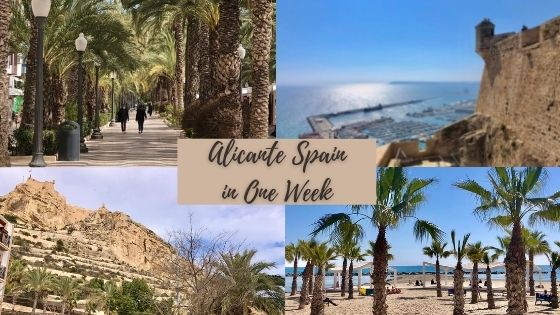
Alicante Spain in One Week
I was lucky enough to visit Alicante, Spain in early March 2022. I had never been to this specific part of Spain so it was a real adventure for me. I went along with a friend who also hadn’t spent much time in the vicinity of Alicante. We explored together this coastal area of Spain for one week and had a wonderful time! I would like to share with you our itinerary of ‘Alicante Spain in One Week’.
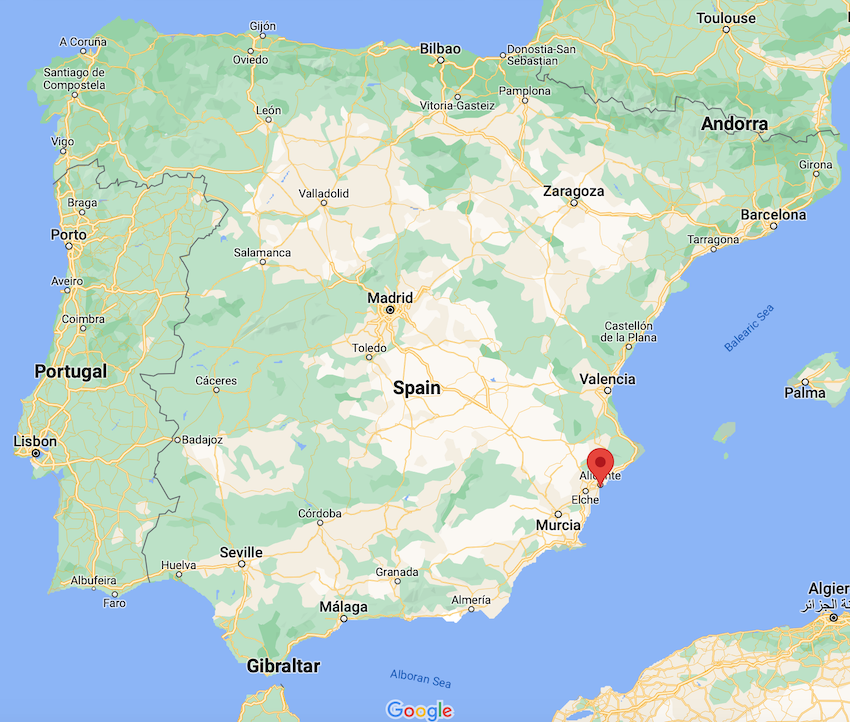
If you are looking for assistance to plan your next trip, I am here for YOU! I love to plan travel itineraries for myself and others. For more details on how I provide this service, please check out my Itinerary Planning page and drop me a quick email at jan@janadventures.com to get started!
- Day 1 – Alicante Waterfront and Beaches
- Day 2 – Central Market, Santa Barbara Castle, Villajoyosa, & Benidorm
- Day 3 – Alicante Old Town
- Day 4 – Elche and Palm Orchards
- Day 5 – Bullring, San Fernando Castle, Muchavista, El Campello
- Day 6 – Rainy Netflix Day
- Day 7 – Santa Pola
- Summary of Alicante Spain in One Week
Day 1 – Alicante Waterfront and Beaches
On the first day, we got settled into our Airbnb apartment after taking the 20-minute ride on the public bus from the airport. Our apartment was conveniently located in the center of Alicante, near the Central Market. We could easily walk to the waterfront in 10 minutes.

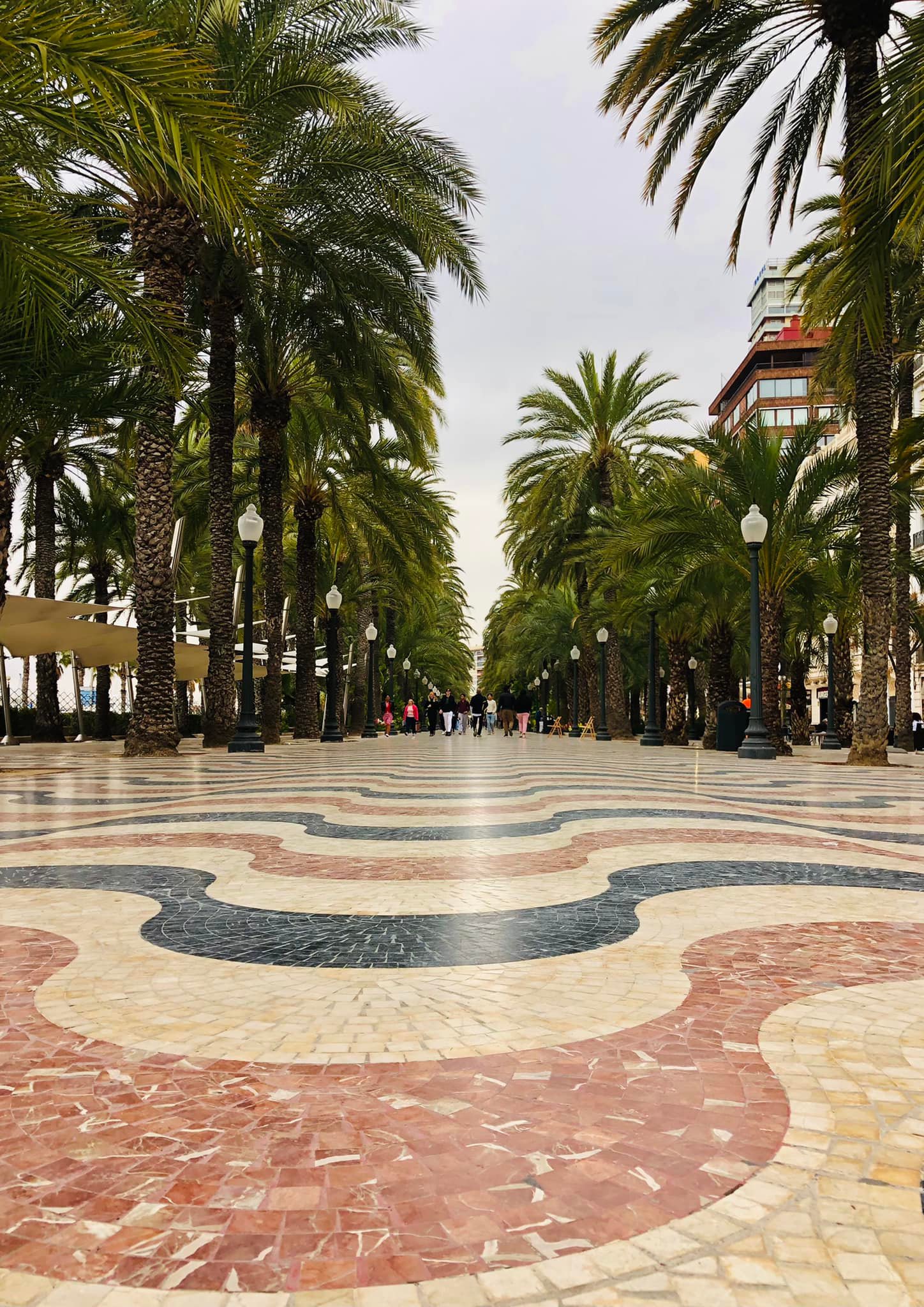
Our first place to check out in Alicante was the famous Esplanade near the waterfront and the harbor. The Explanada de España is the most popular pedestrian walkway in the city. The mosaic paving resembling ocean waves is 600 meters long and runs parallel to the port. The floor is decorated with 6 million tricolor marble tiles. The scenic path is surrounded by four rows of palm trees. We visited this area several times during the week, both during the day and night.

From the esplanade, we walked north by a pretty water fountain and next to the pier and tourist information office. From this point, you could see Postiguet Beach with many people enjoying the Spring weather of 21 degrees celsius. Be sure to walk all the way out onto this pier to get a great view of the city and castle.
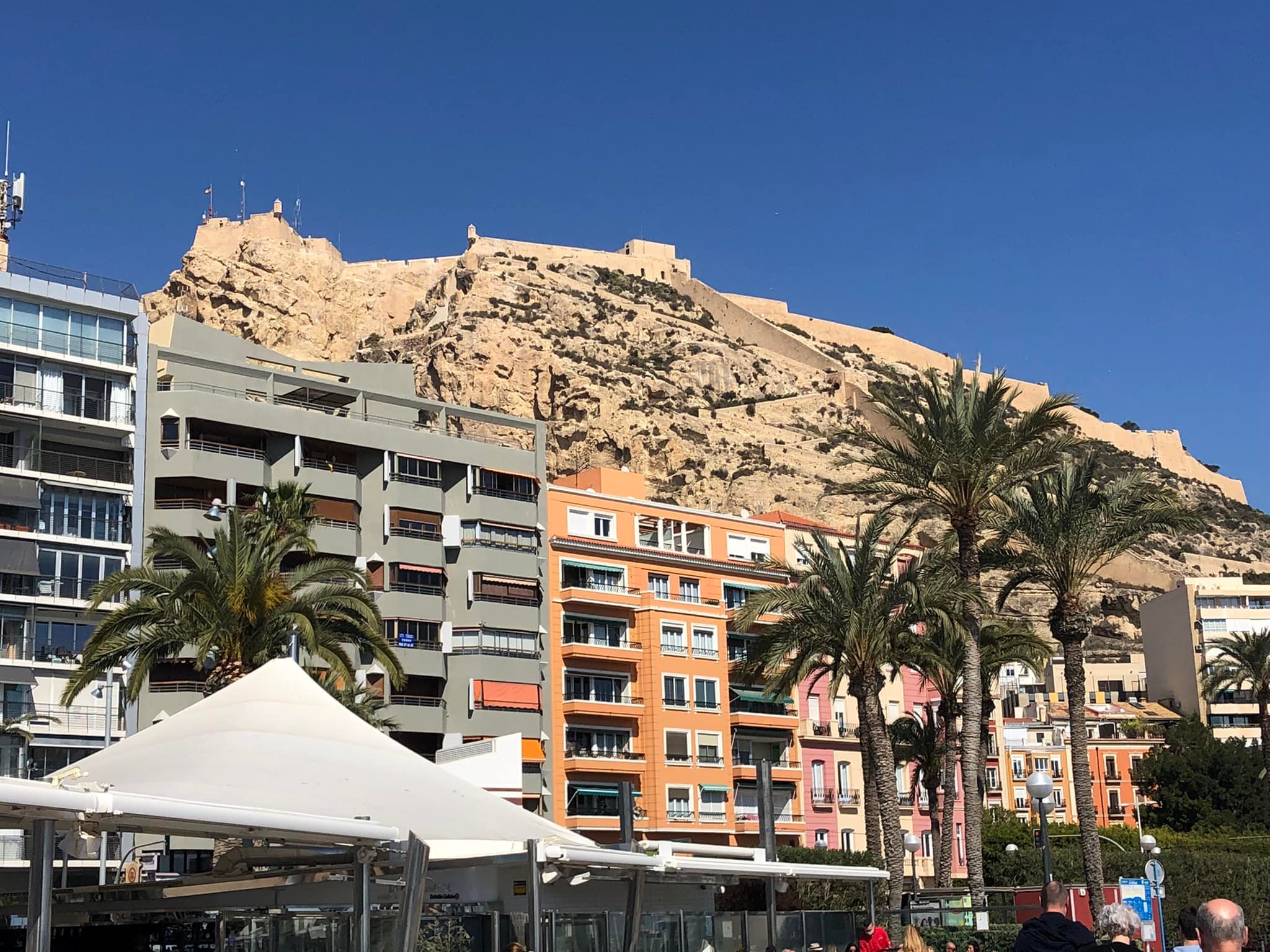
You could also get a nice view of the castle up above. We decided to keep walking along the beach and finally ended up in the suburb of Albufereta. We found a small outside cafe to have tapas for lunch. It was sunny and warm on our first day and we took advantage by walking next to the beach.
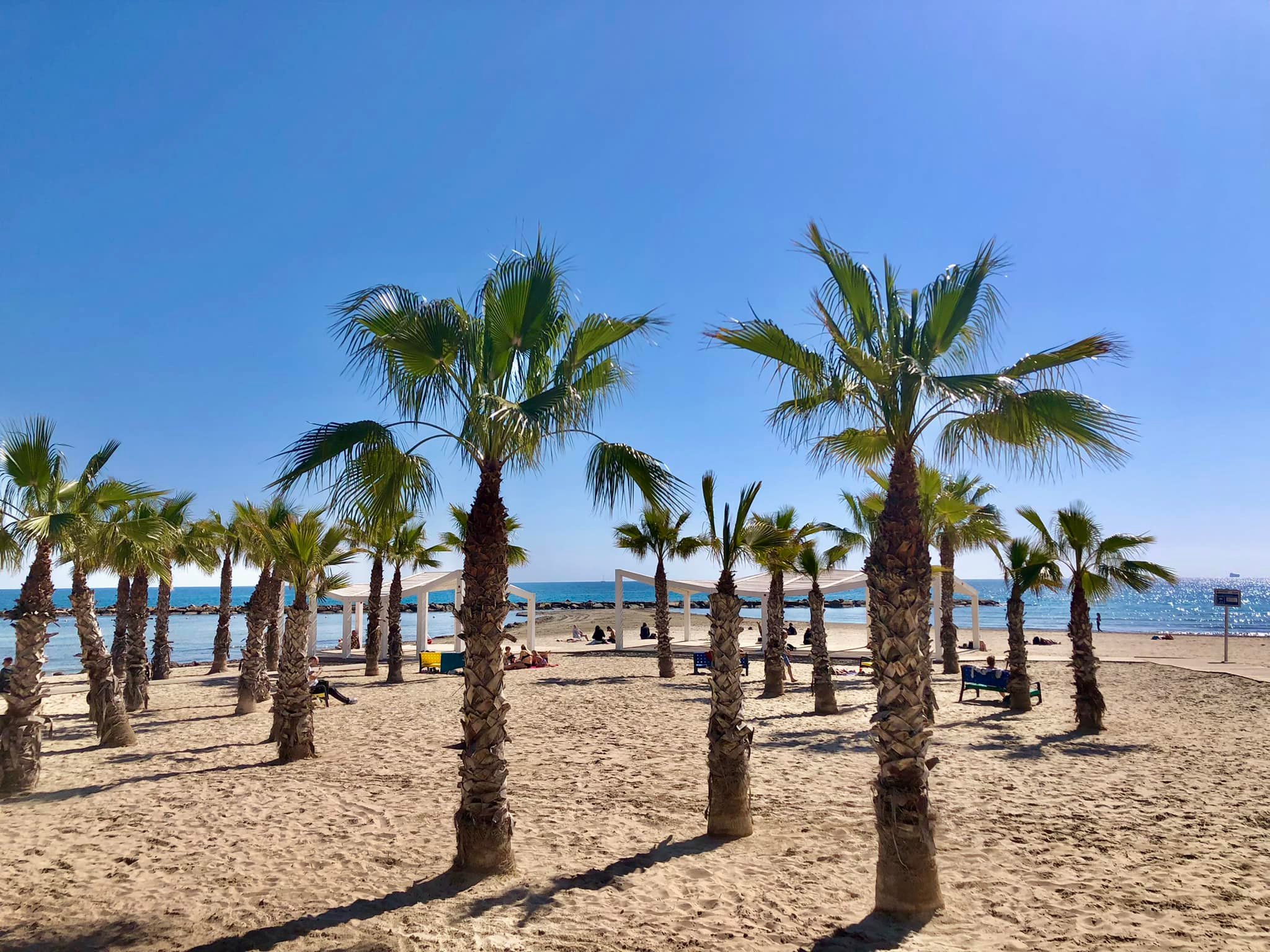
What surprised me most about the beaches here were the huge palm trees planted directly in the sand. The tropical trees gave the beaches a unique ambiance.
Day 2 – Central Market, Santa Barbara Castle, Villajoyosa, & Benidorm
Day 2 was a very busy one with many things to see and lots of walking! I believe we did 28,000 steps on this day! The weather was again sunny and mild, so off we went.
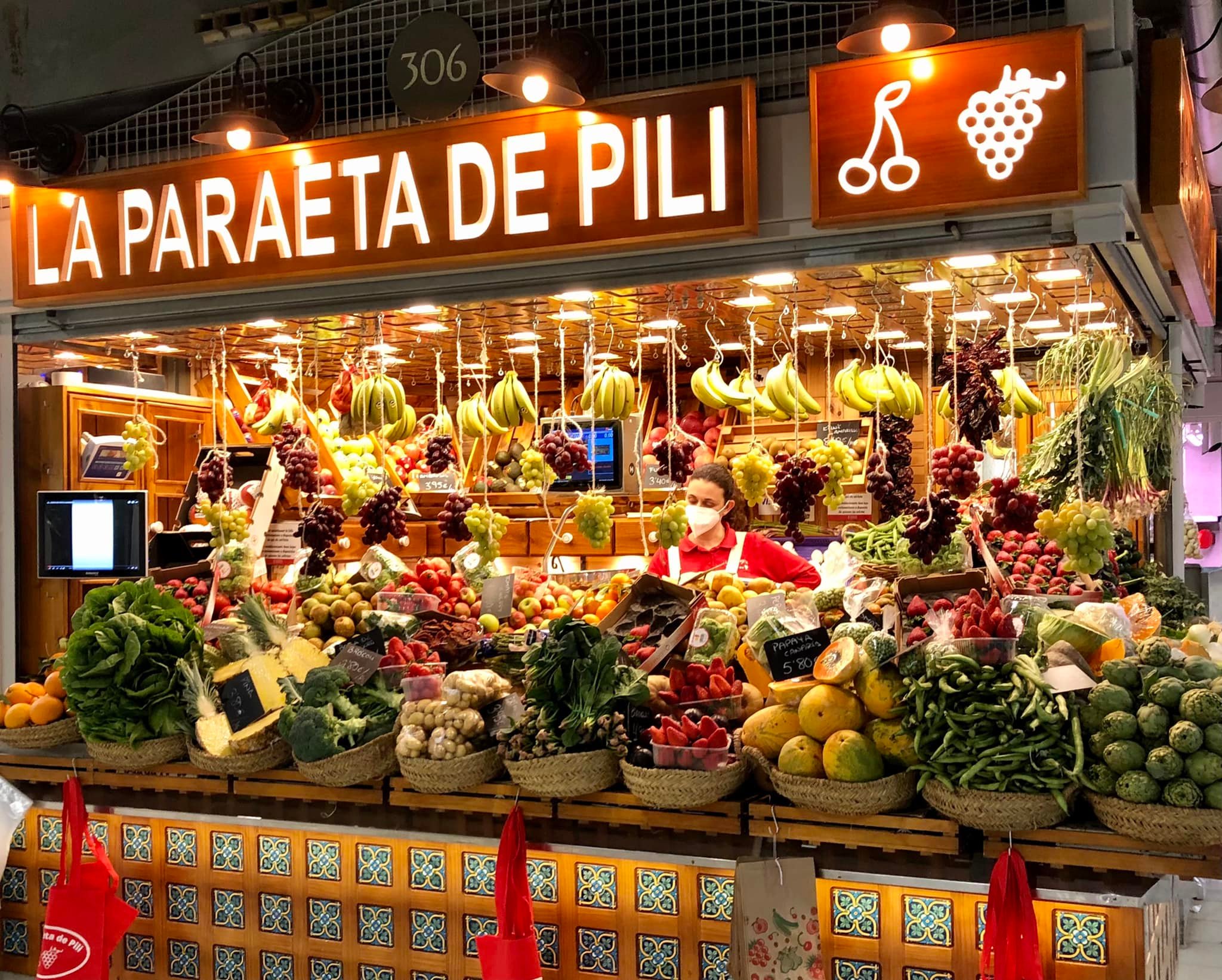
The first quick stop was to see the central market (Mercado Central) with over 300 stalls of meat, fish, olives, fruit, and vegetables. It was a huge building with a vibrant atmosphere. It was very stimulating to the eye to see all of the colorful stands.
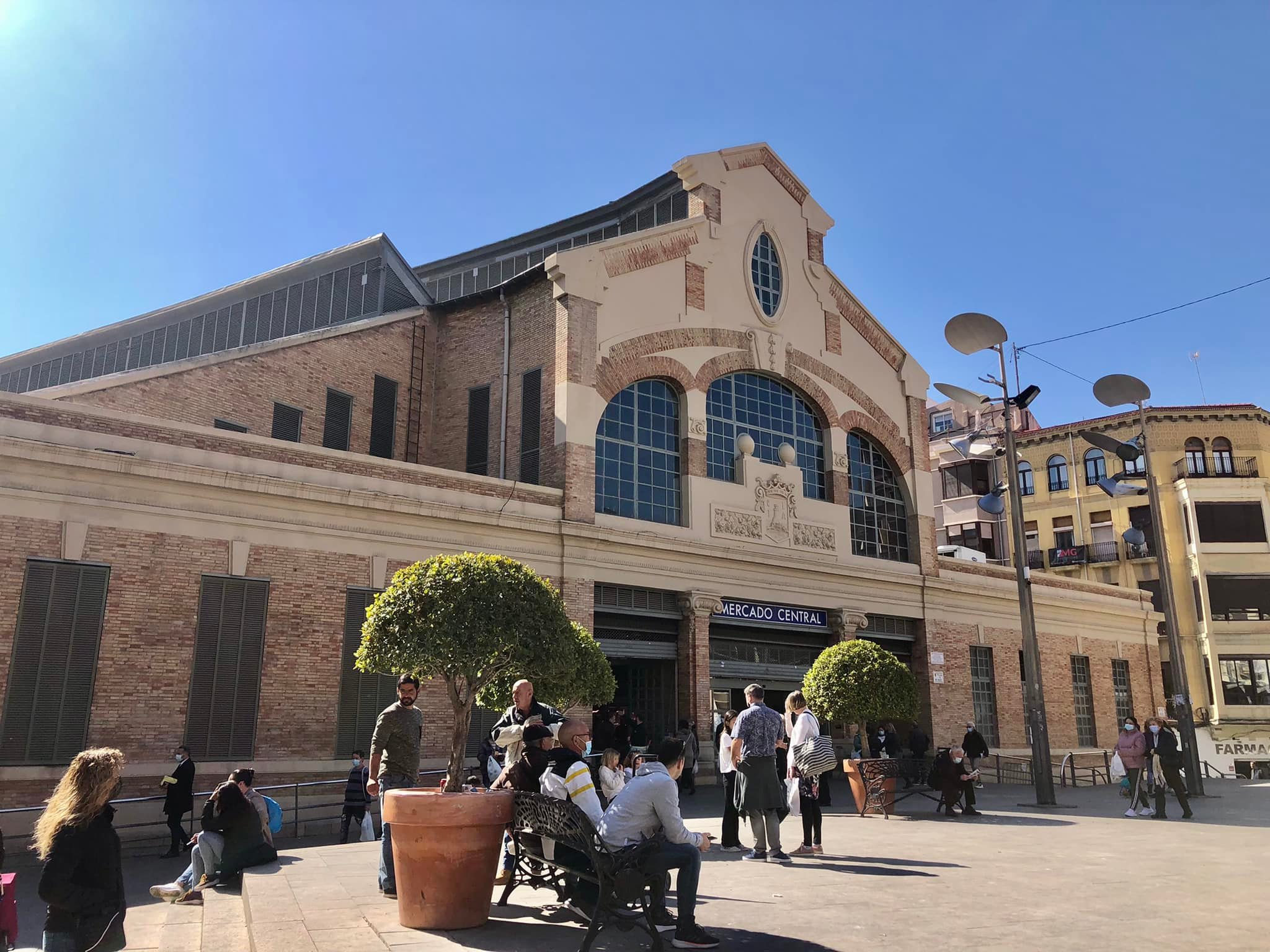
Many locals were in the market doing their daily shopping. I was a bit shocked to see some of the displays, including the below photo of cow, sheep, and pig feet (yuck)!

After touring the market, we walked to the waterfront where the elevator entrance was located for the Santa Barbara castle. We decided to take the easy way up and then walk down from the castle. Thankfully, at this time of year, there were no long lines to get into the lift. The price was reasonable at 2-3 euros per person.
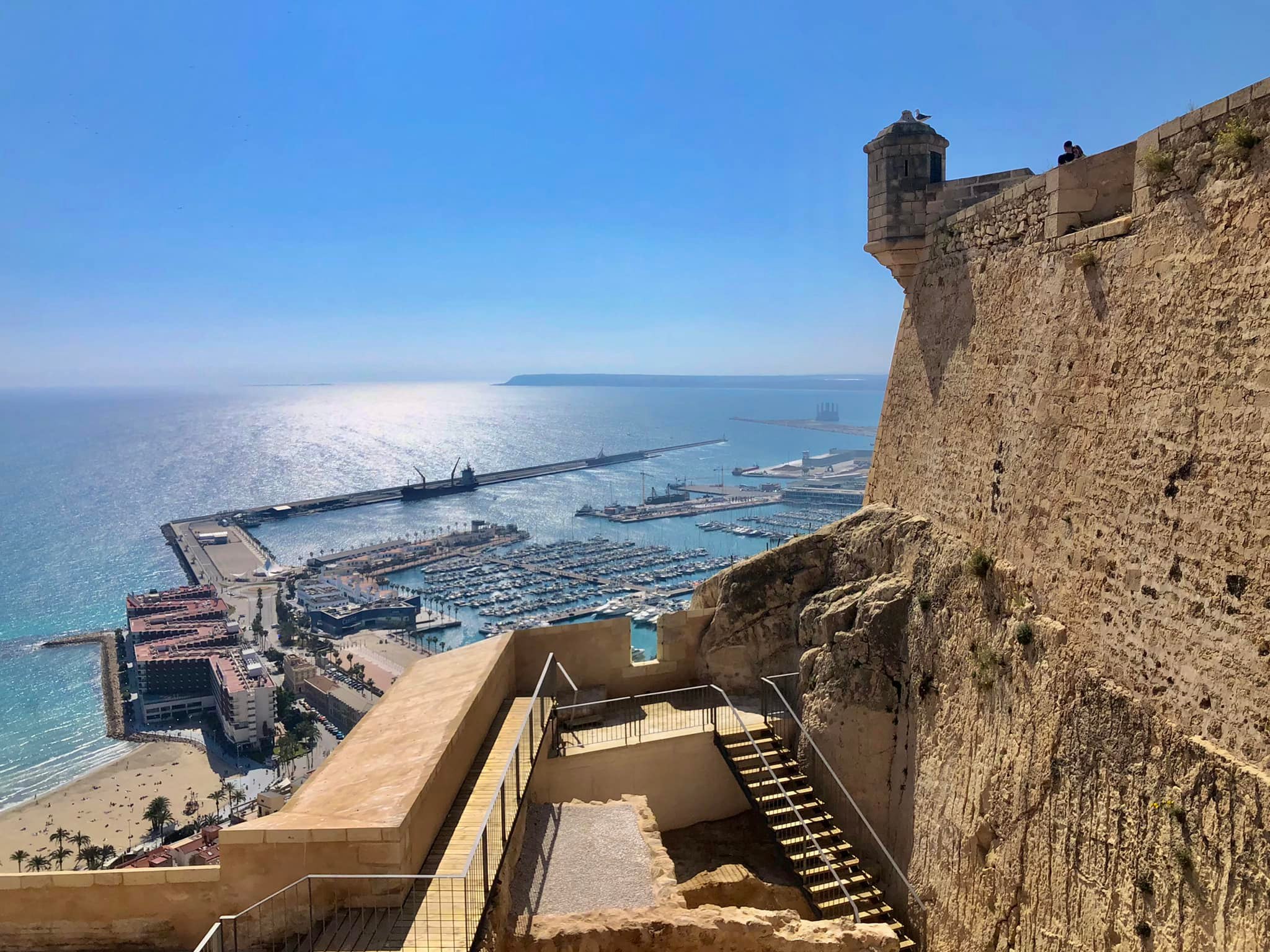
The castle, one of Spain’s largest medieval fortresses, was constructed in the 9th century by Arab conquerors and sits on top of Mount Benacantil at a height of 166 meters. The name Santa Barbara was given to the castle because Prince Alfonso de Castilla took it from the Islamic forces on St. Barbara’s day.
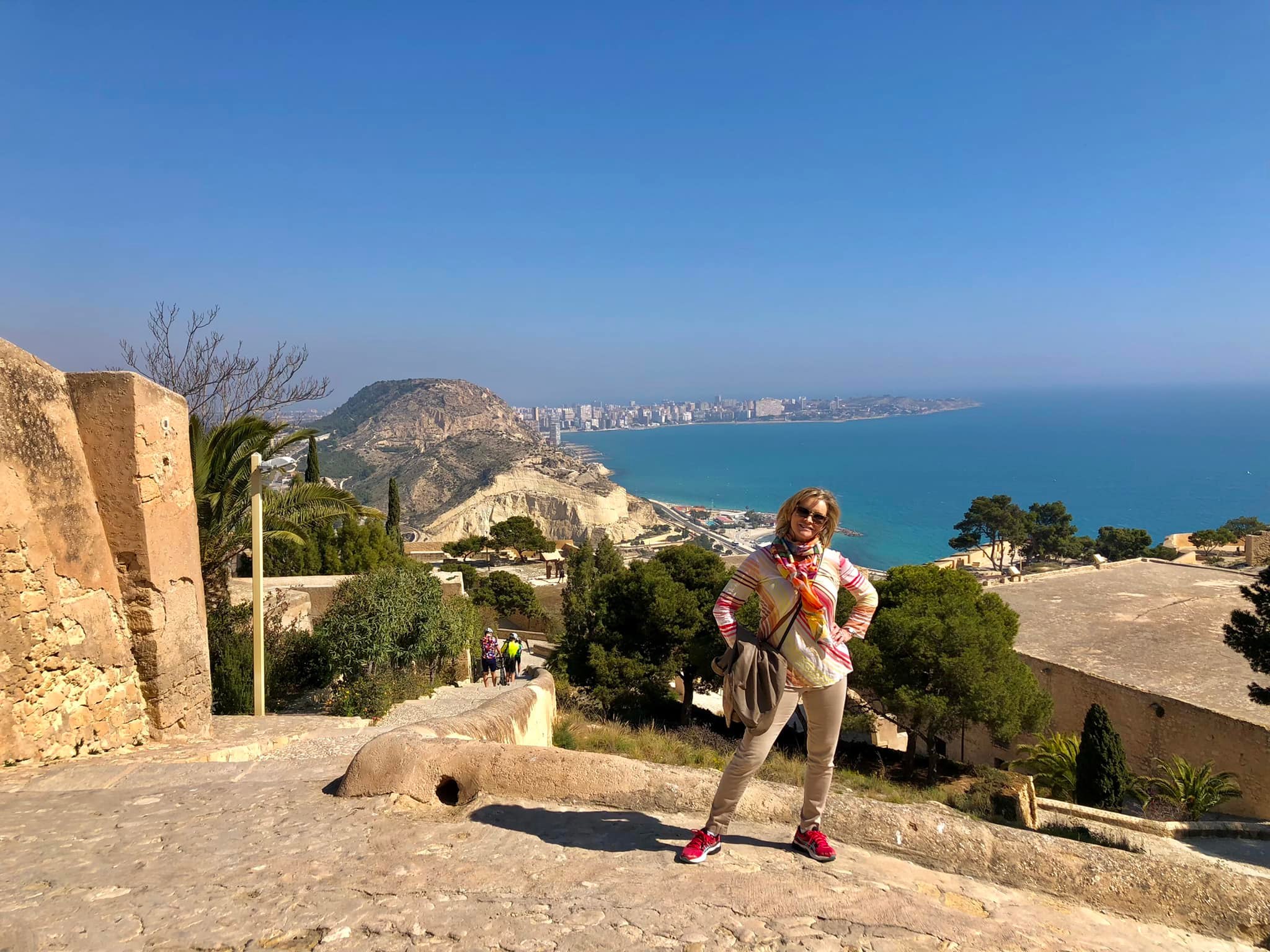
The castle was preserved until the 13th century when it was recaptured by the Christians. In the 16th century, it was refurbished by order of Felipe II and during the War of Succession, it was severely damaged. During the Spanish Civil War, it was used as a prison. The castle was opened to the public in 1963, the same year the two lifts inside the mountain were opened. Today Santa Barbara Castle is a place for hosting different festivals and exhibitions.
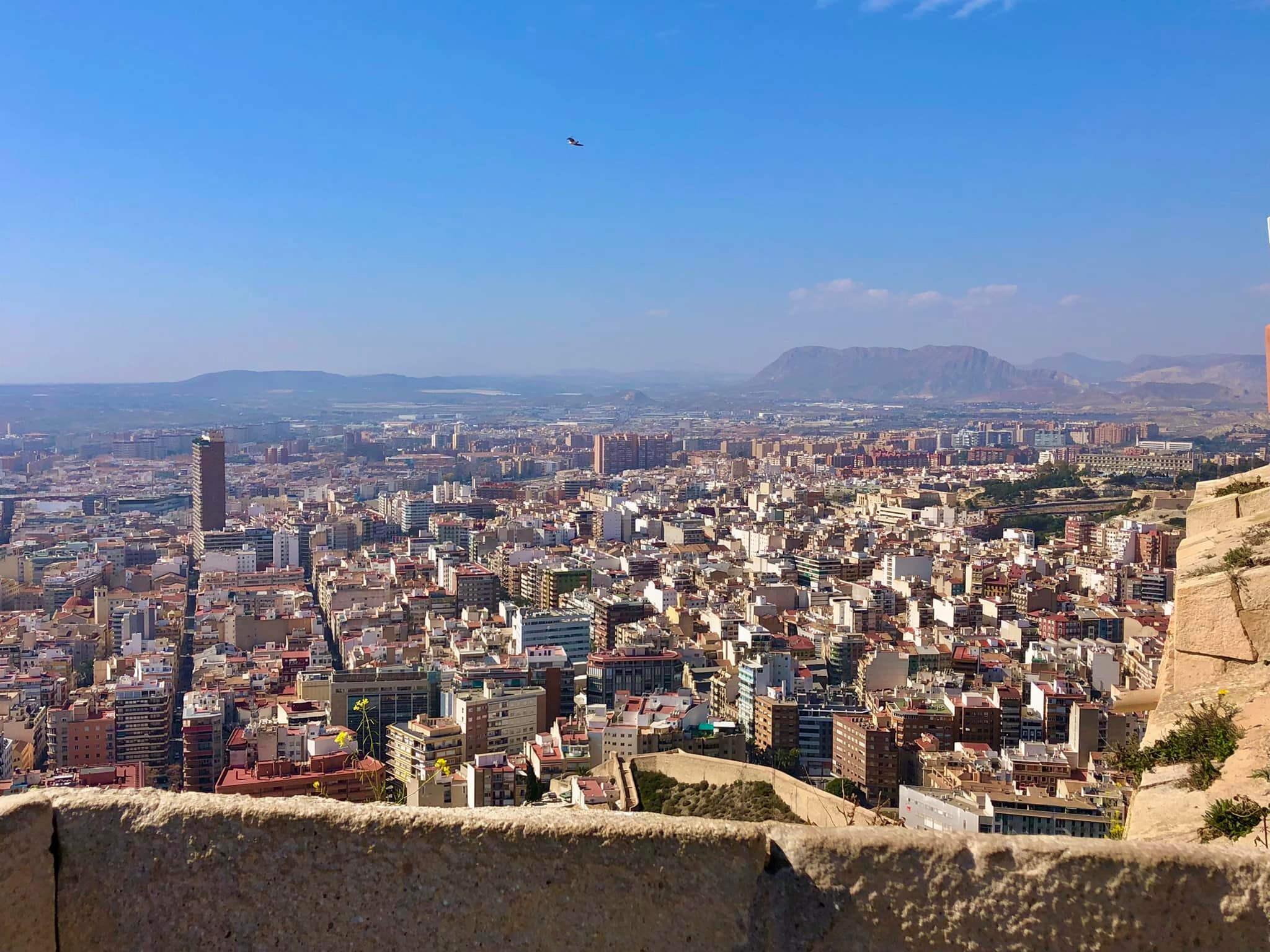
It was well worth the visit just to see the amazing 360-degree view of the city, mountains, and sea!
After spending close to an hour walking around the castle terraces, we walked down the Castle road and arrived at the Marq-Castillo tram station. We jumped on the tram for a 45-minute ride north to the town of Villajoyosa.
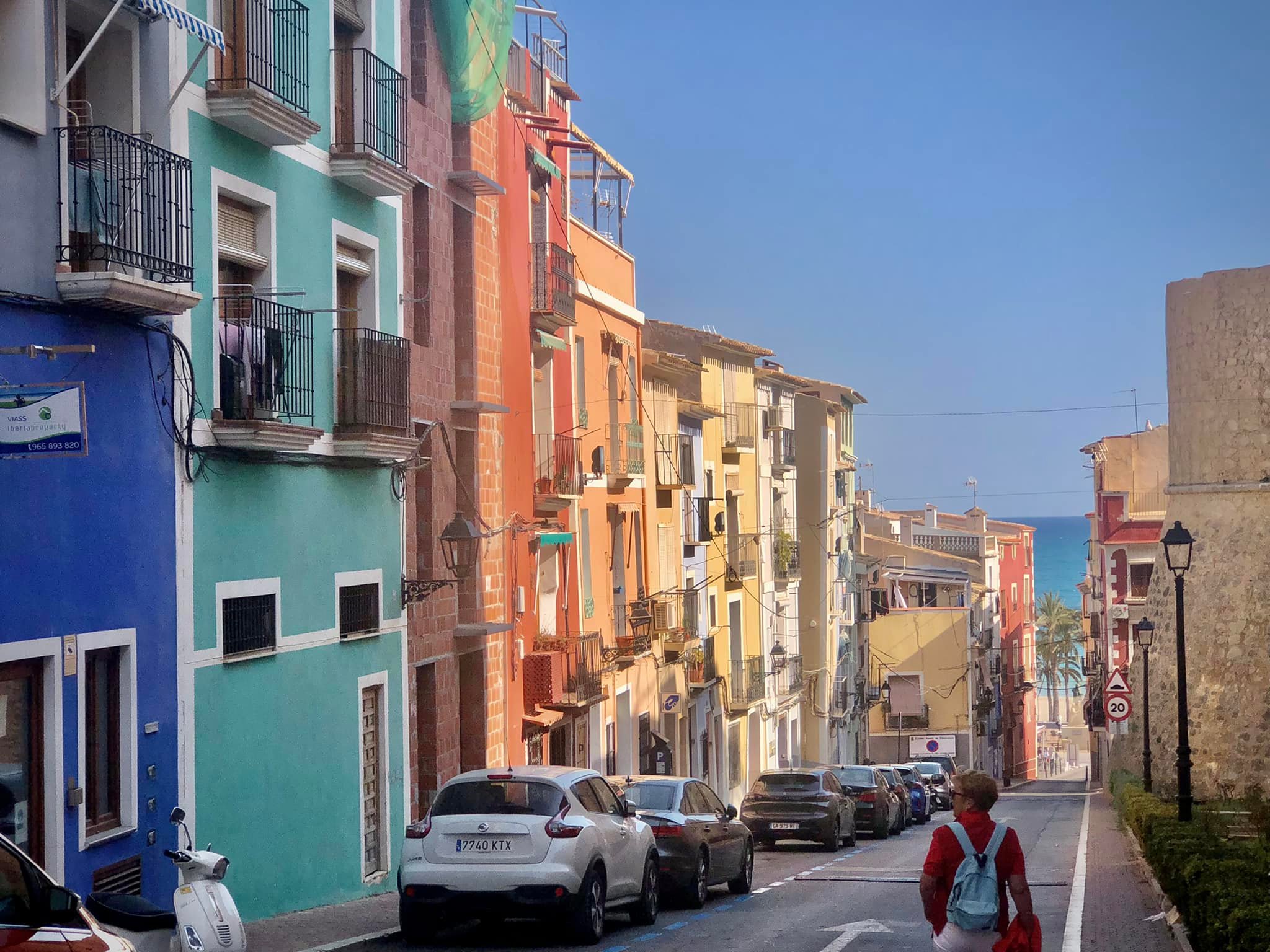
I had seen pictures on the internet of this scenic beach town and wanted to go! Villajoyosa is translated as ‘Town of Joy’, and it was indeed a delight to see the brightly colored buildings.
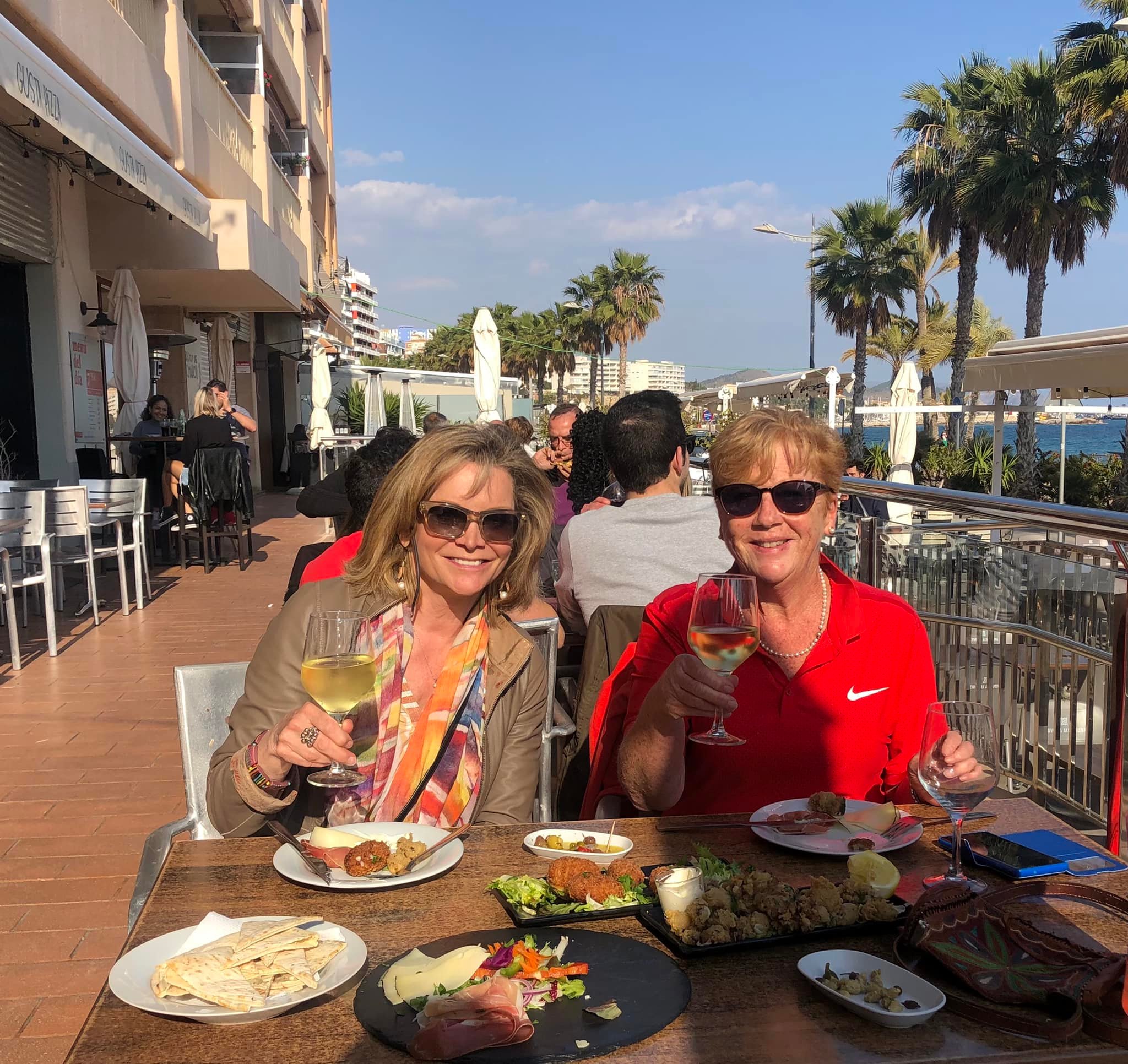
My friend and I walked along the beach boardwalk and stopped off at an outdoor terrace to have lunch by the water! Local white wine and tapas were the perfect afternoon experience in Villajoyosa!
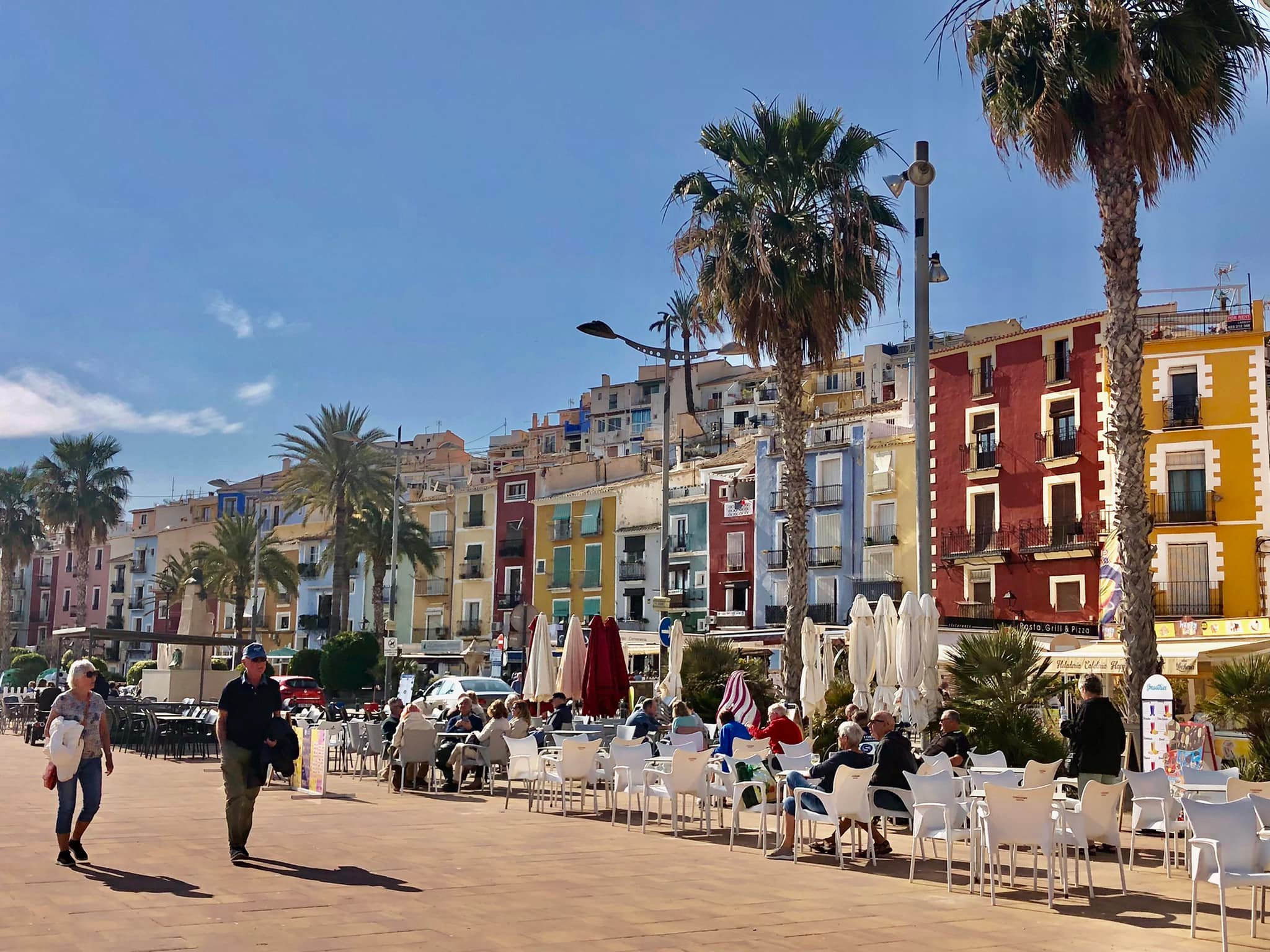
Following our short visit to Villajoyosa, we made a bold decision to take the tram again a bit further north to the touristic town of Benidorm. I discovered that the trams are a great way to get around this area and very inexpensive.
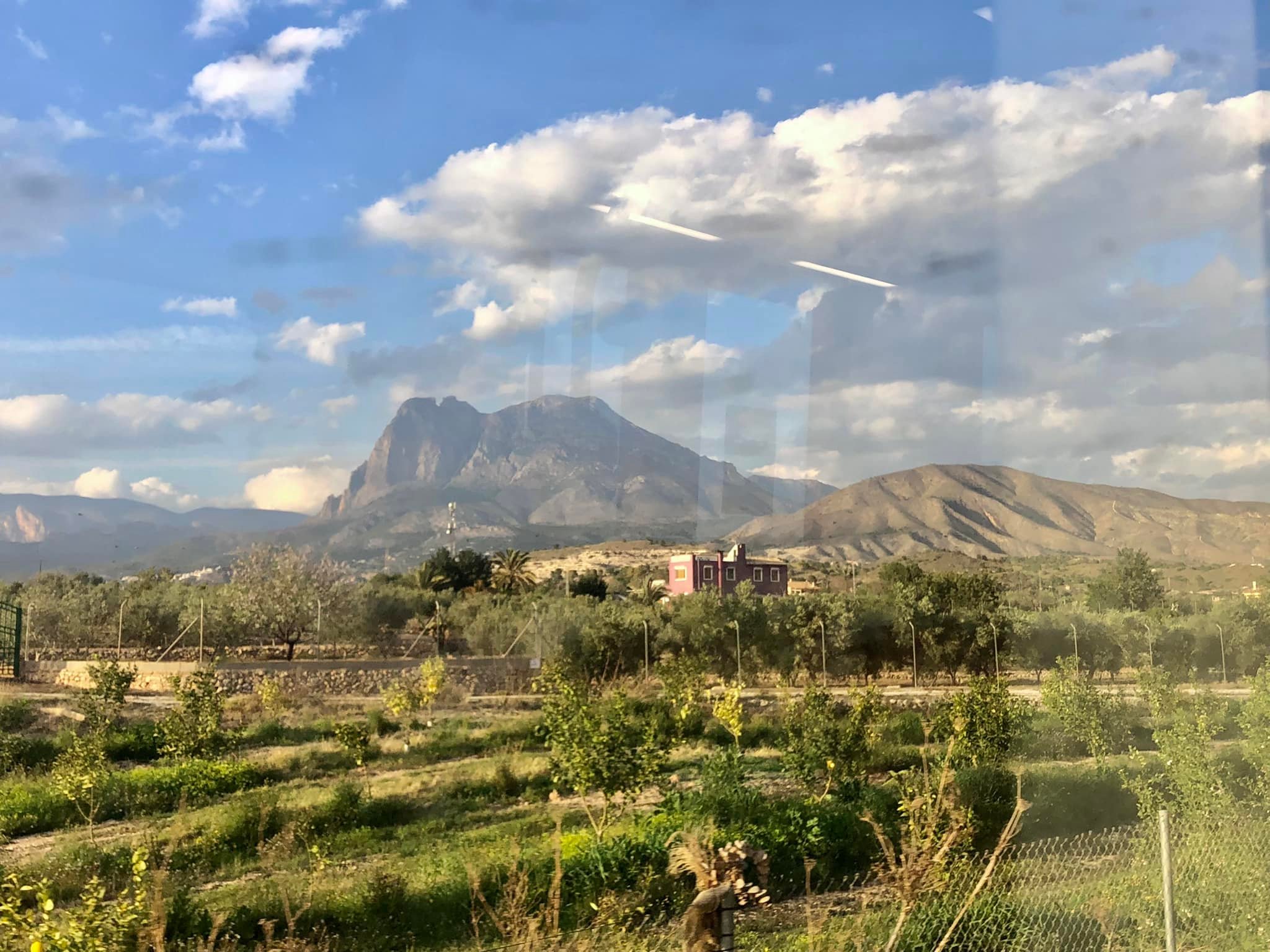
My friend had been to Benidorm and said that I needed to see this unique and crazy tourist spot. Apparently, in the high season months, this town is bombarded by loud English and German tourists. It was amazingly quiet on this day in early March.
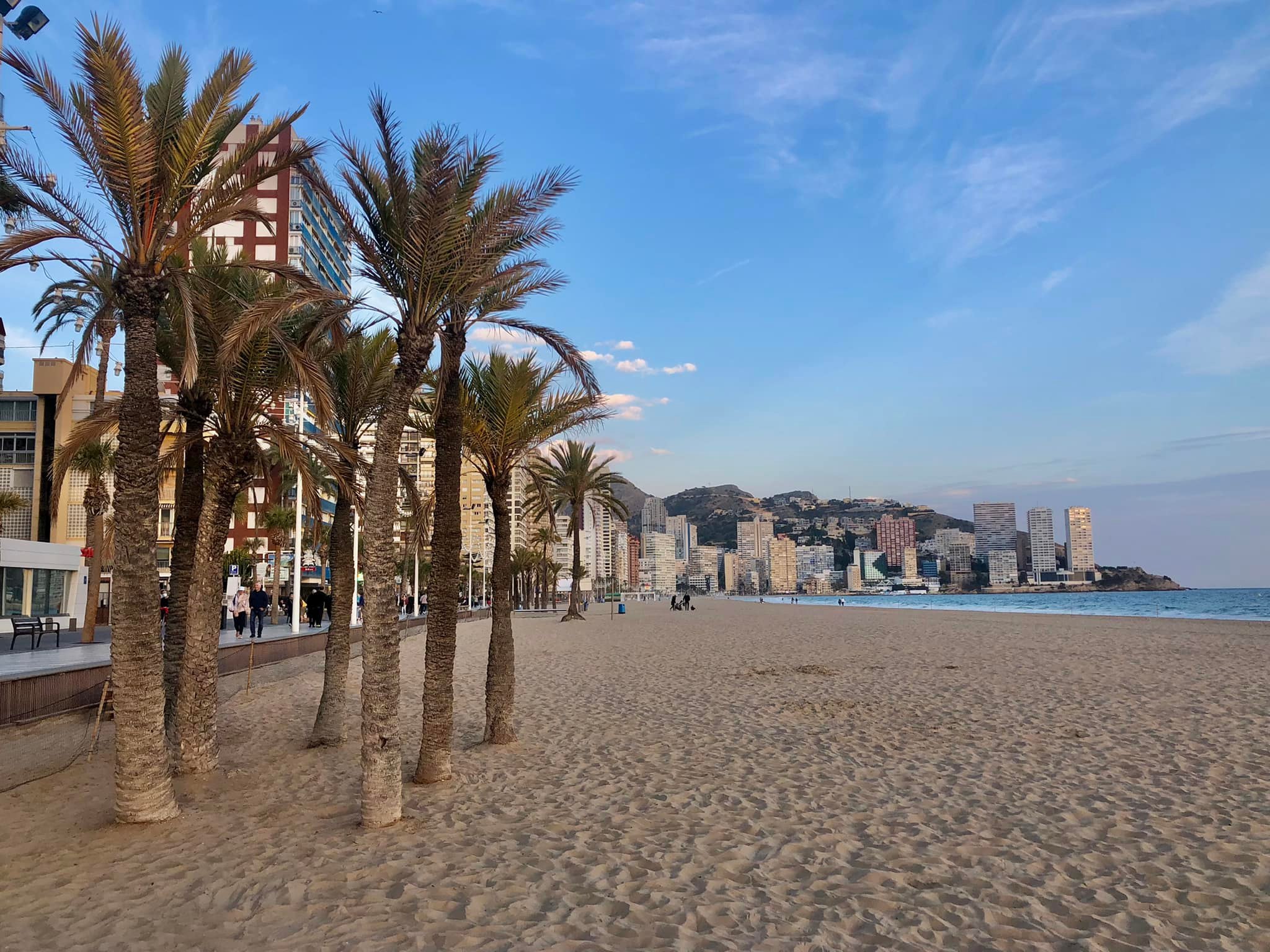
From the tram station in Benidorm, we had to walk down a big hill to the waterfront. We ended up taking a bus to get back up the hill when we headed home to Alicante.
When we reached the waterfront, the sun was just setting and it was a beautiful scene. We walked along the large palm tree-lined esplanade and out onto the sandy beach for photos.
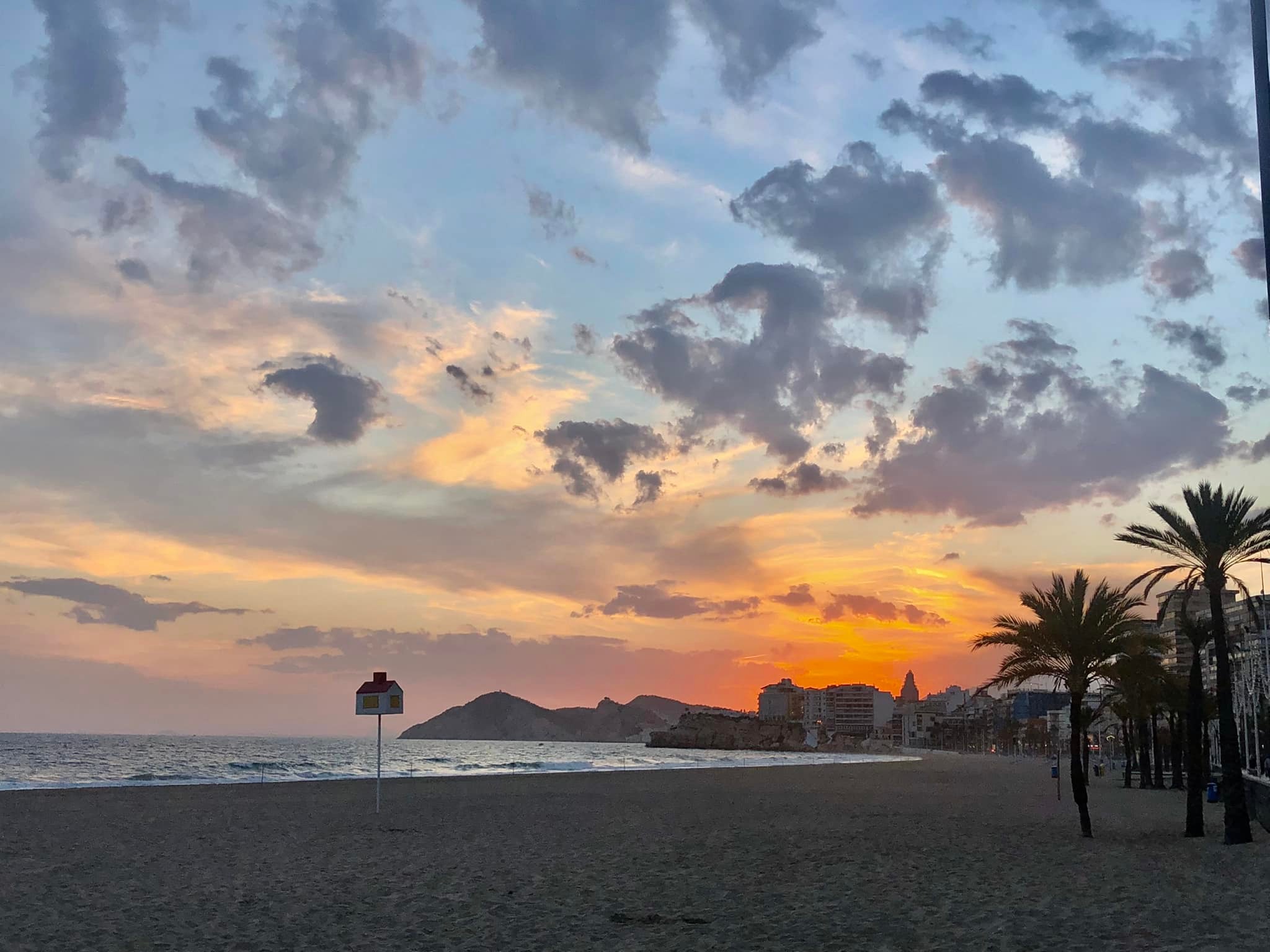
Benidorm is definitely more touristic than Alicante with many high-rise hotels and restaurants. It was nice to see this town but I’m not sure I would return when it’s crowded in the summer months.
Day 3 – Alicante Old Town
After our active Day 2, we decided to relax a bit and stay around Alicante to explore the Old Town. We started off by walking to the central part of Alicante where we came across some enormous ficus trees! There are several squares with these fascinating trees that are known to be between 80 and 120 years old and between 42 and 62 feet high.
We also walked down a vibrant pedestrian street (called Calle San Francisco) with giant mushroom statues! I learned that the installation of these mushrooms started in 2013 as an initiative by the City of Alicante to give life to and help the businesses of the city. It was definitely a great place for photos!
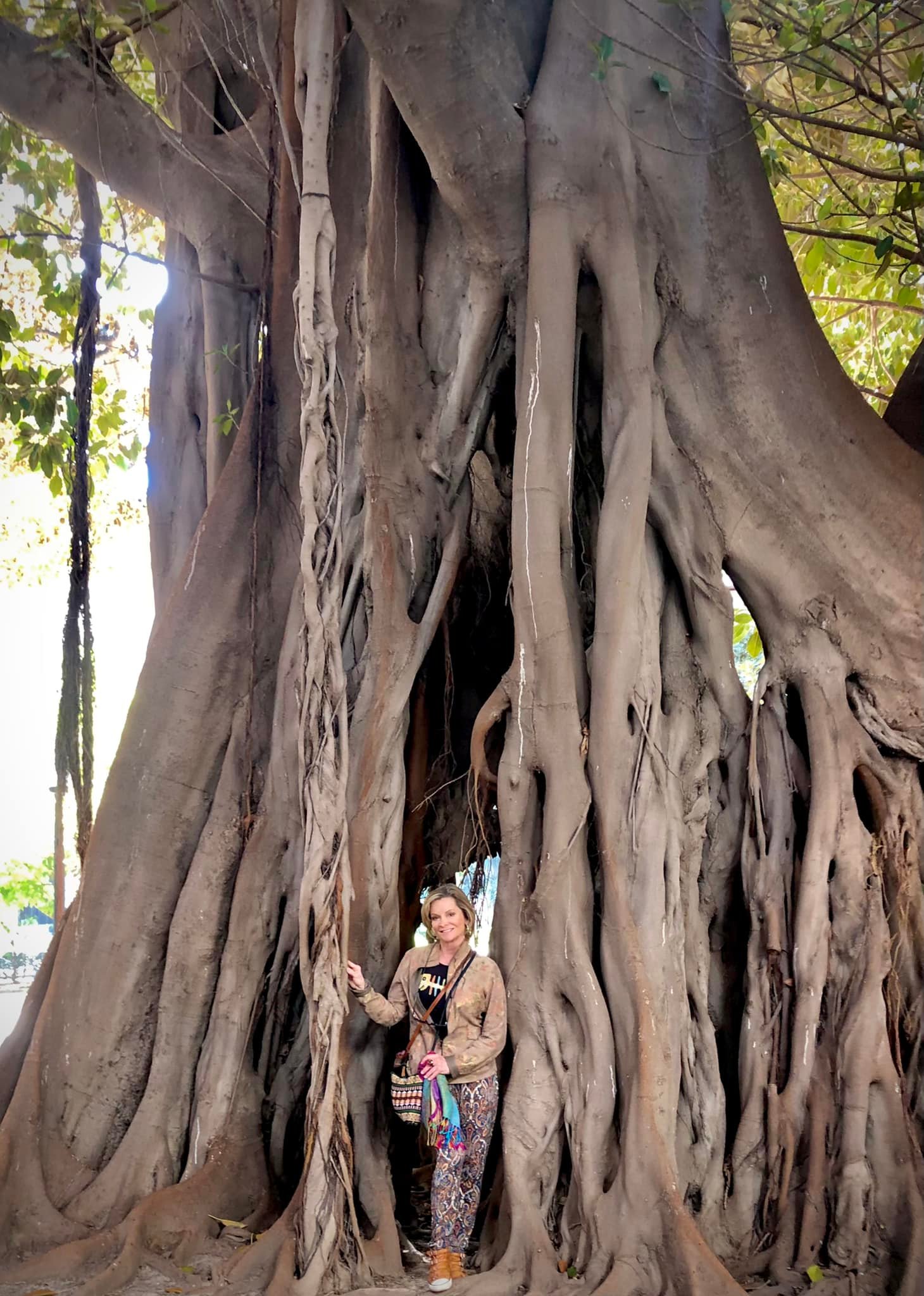
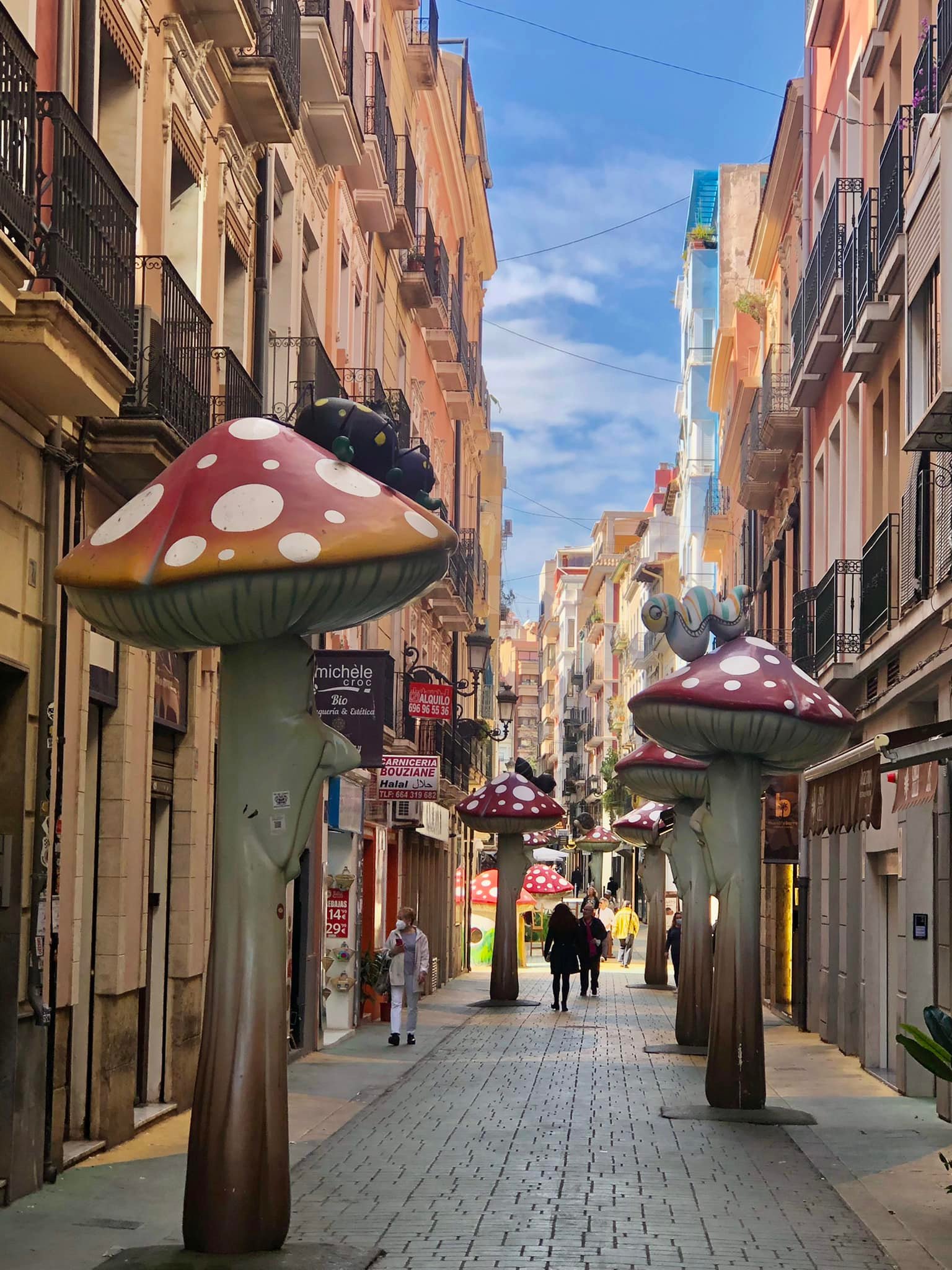
We finally found our way to the Old Town after asking many people how to get there. The people in Alicante were very friendly and helpful. As we arrived, we came across a great spot to eat outside and admire the Santa Barbara Castle above.

Following our tasty tapas and white wine, we ventured off in search of the colorful buildings and narrow alleyways in the Old Town. We found the area called Santa Cruz, the oldest quarter of Alicante. You can walk through the cobbled sloping streets filled with small white houses. Many of the balconies are decorated with flowers.
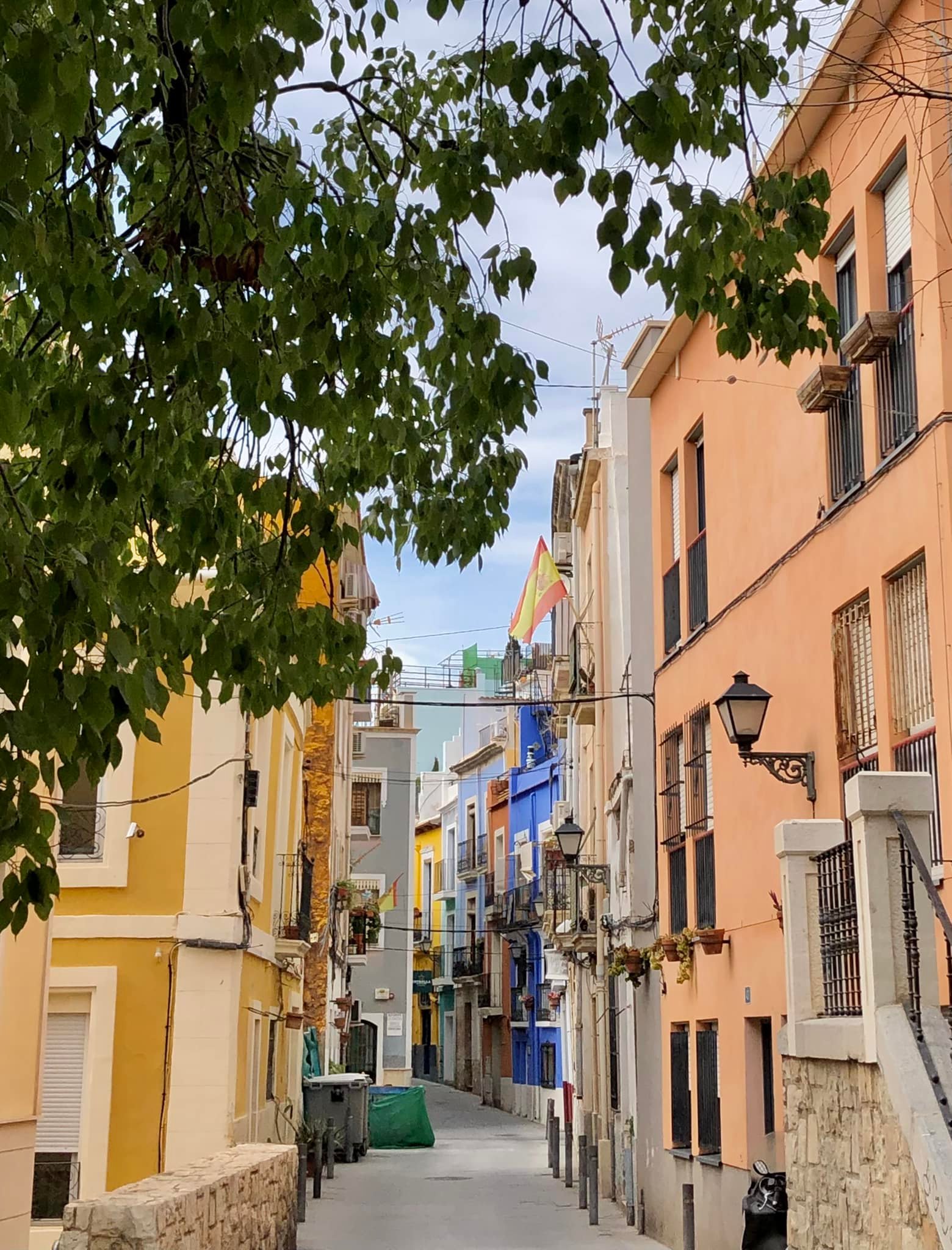
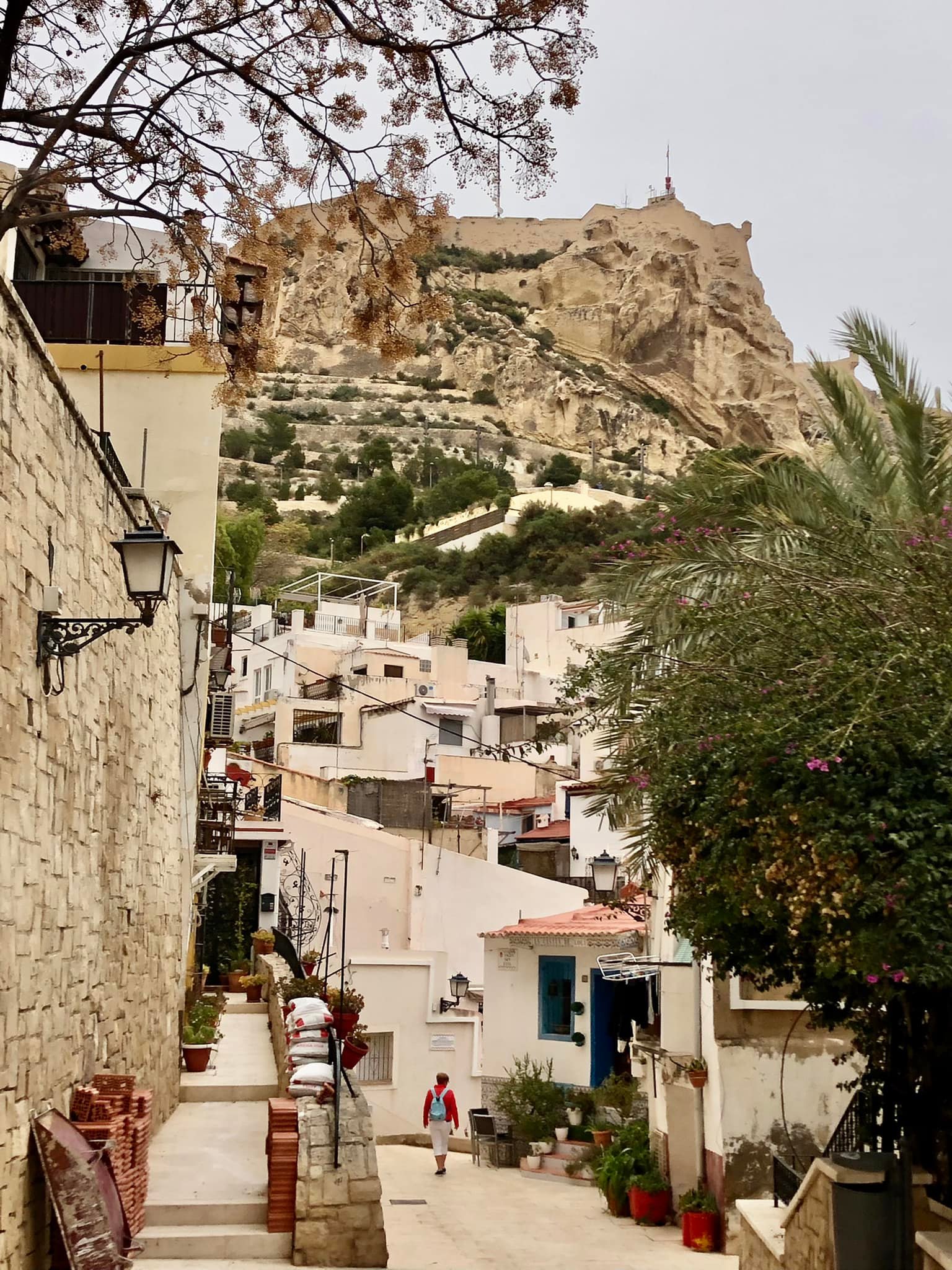
We found it very quiet here at this time of year. The colorful quaint houses are so picturesque.
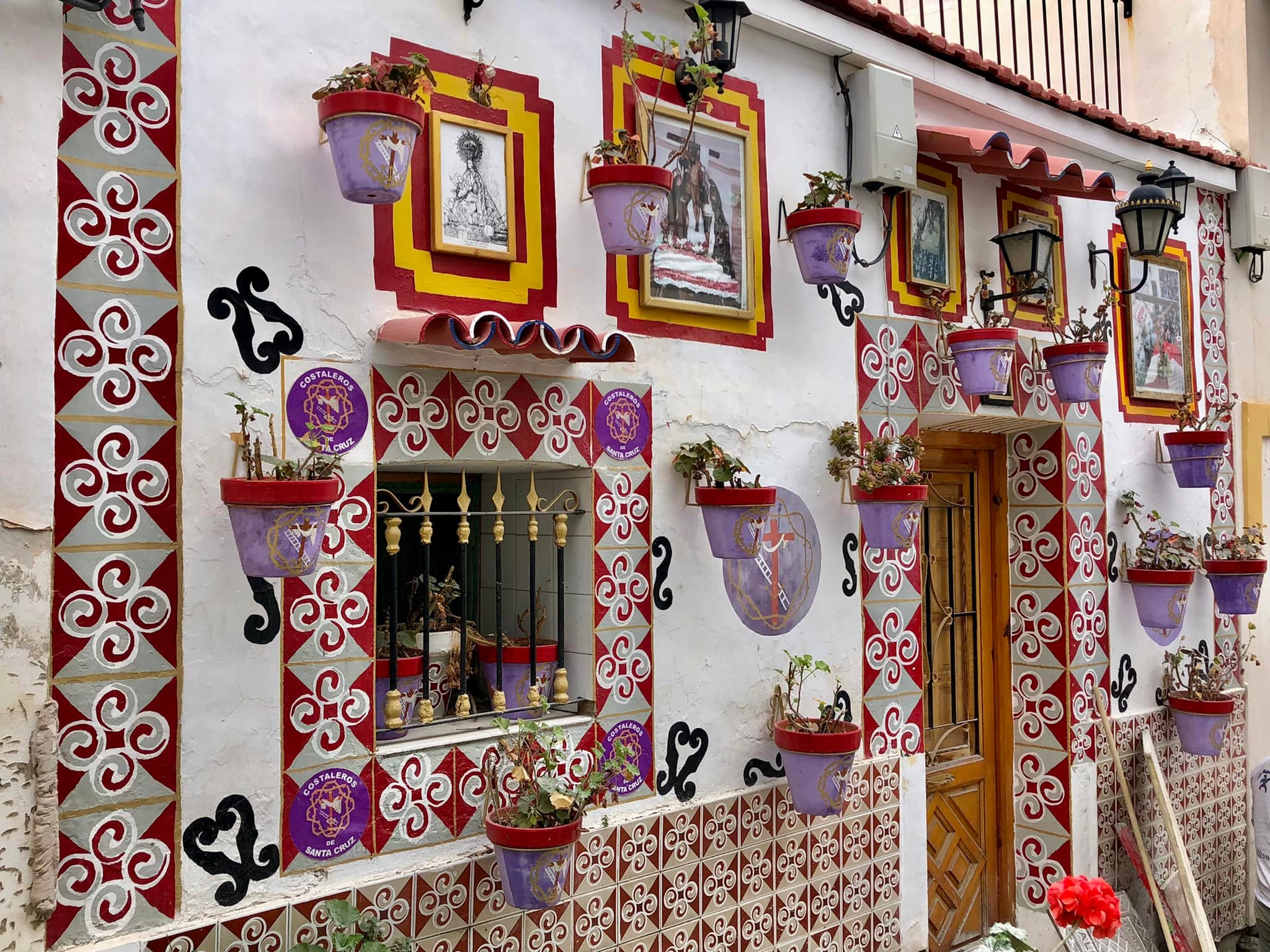
As we passed the decorated homes, we arrived at the highest point with a wide view of Alicante looking toward the water.
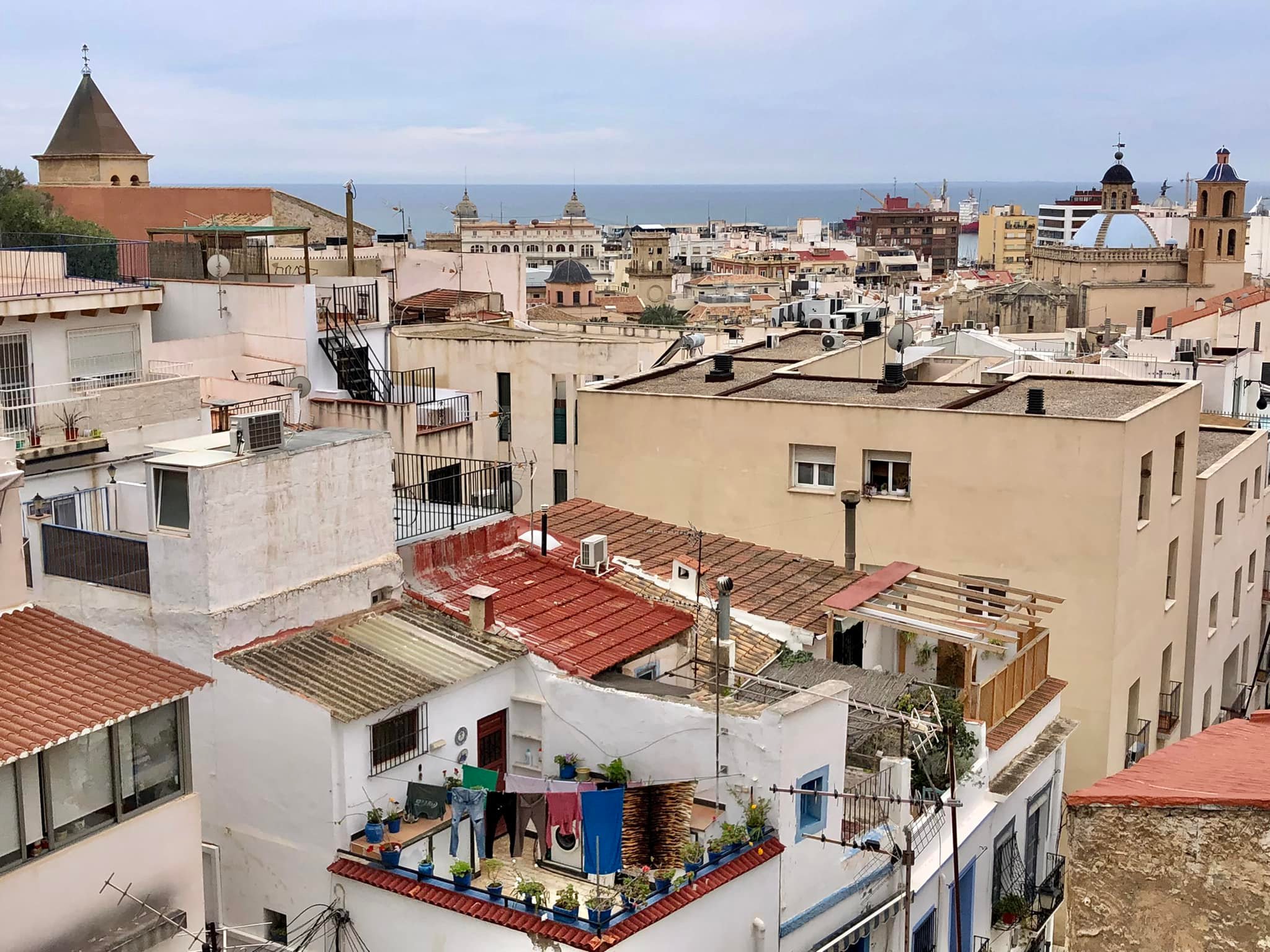
On the evening of Day 3, we went to a recommended restaurant which was very unique and fun. The name of the place was D’Tablas and was located near the center of town. We didn’t have reservations but were lucky to get a table when we arrived.
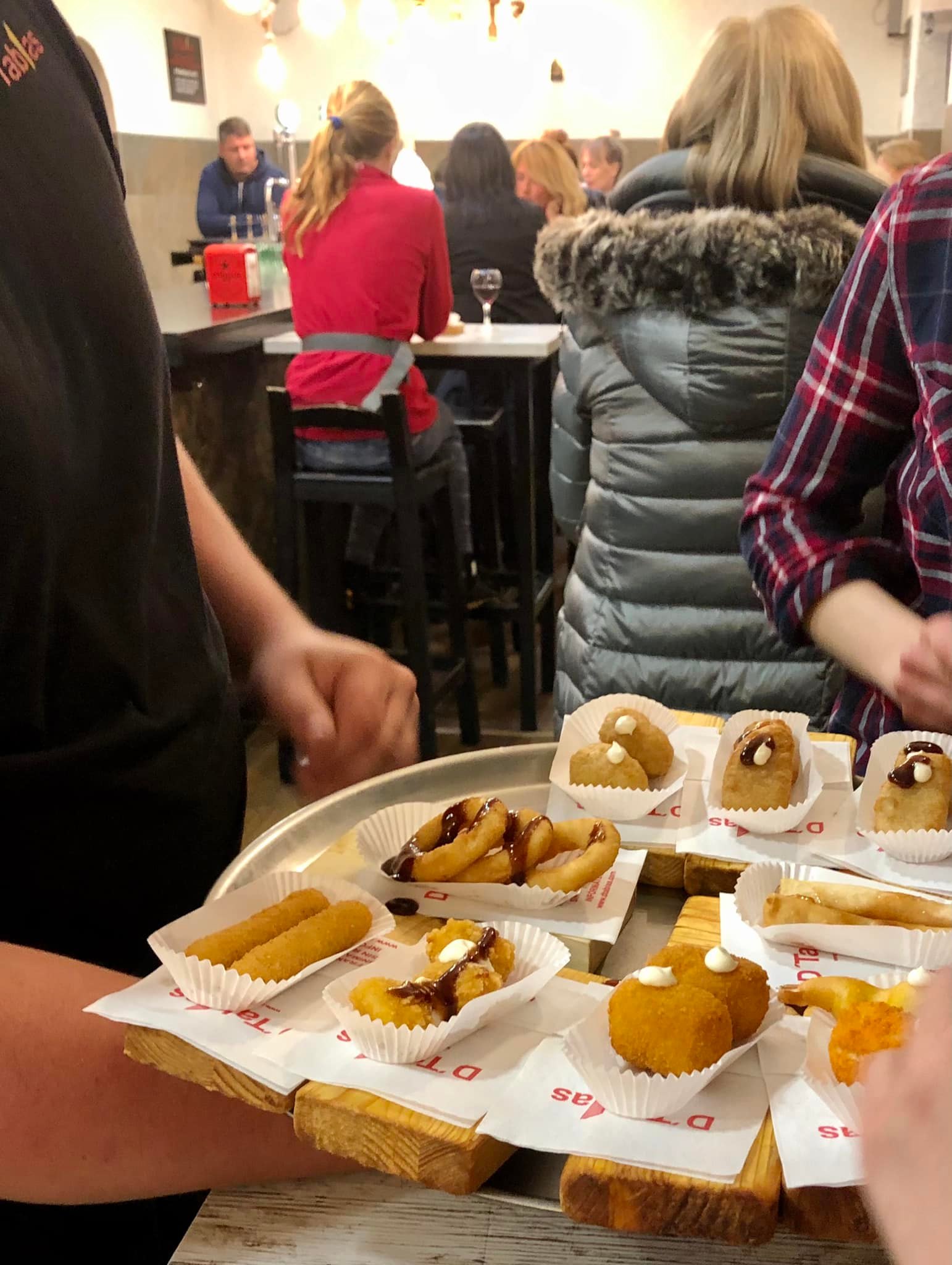
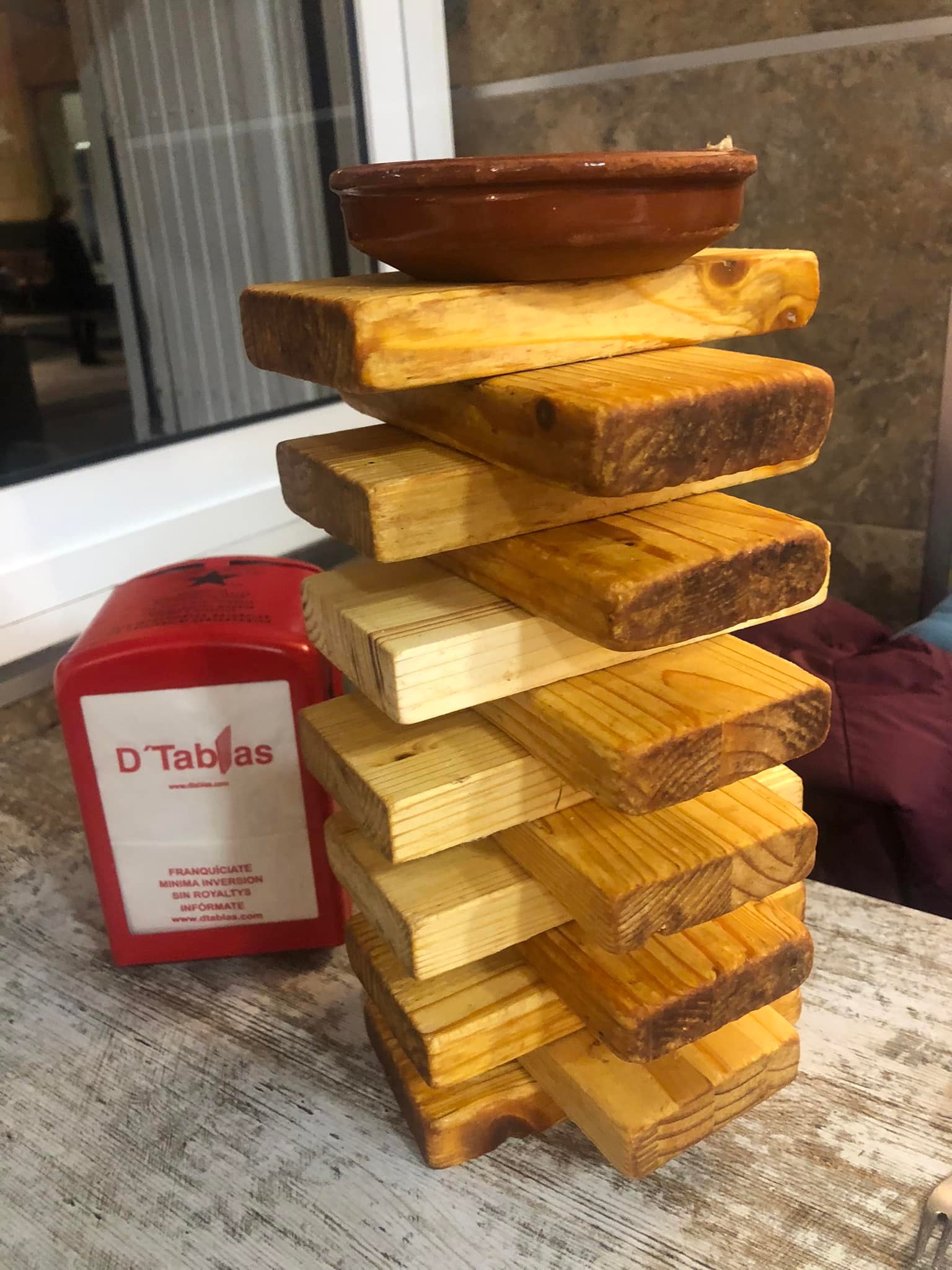
The concept of this Tapas bar was that the waiters continuously come around to all of the tables with various tapas. You can take as many tapas as you want, but you must keep the small wooden tablets on your table so they will know how much to charge you at the end. The cost per tapas was 1-3 euros. We ended up having a total of 16! I loved the ambiance and novelty of serving food this way!
Day 4 – Elche and Palm Orchards
Another day, another excursion. On Day 4, we set off to discover the nearby inland town of Elche. We walked to the Alicante train station and took a 30-minute ride to reach Elche.
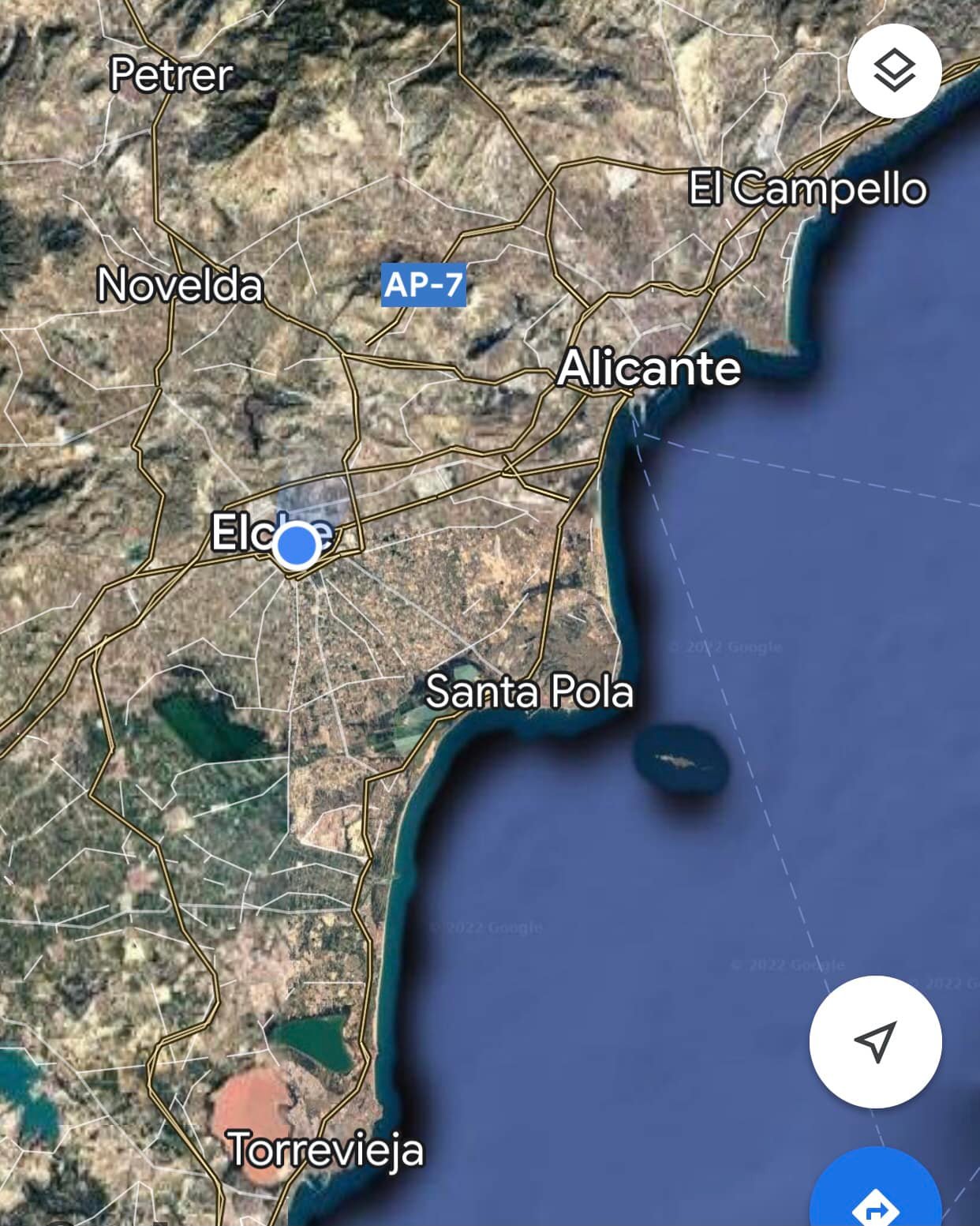
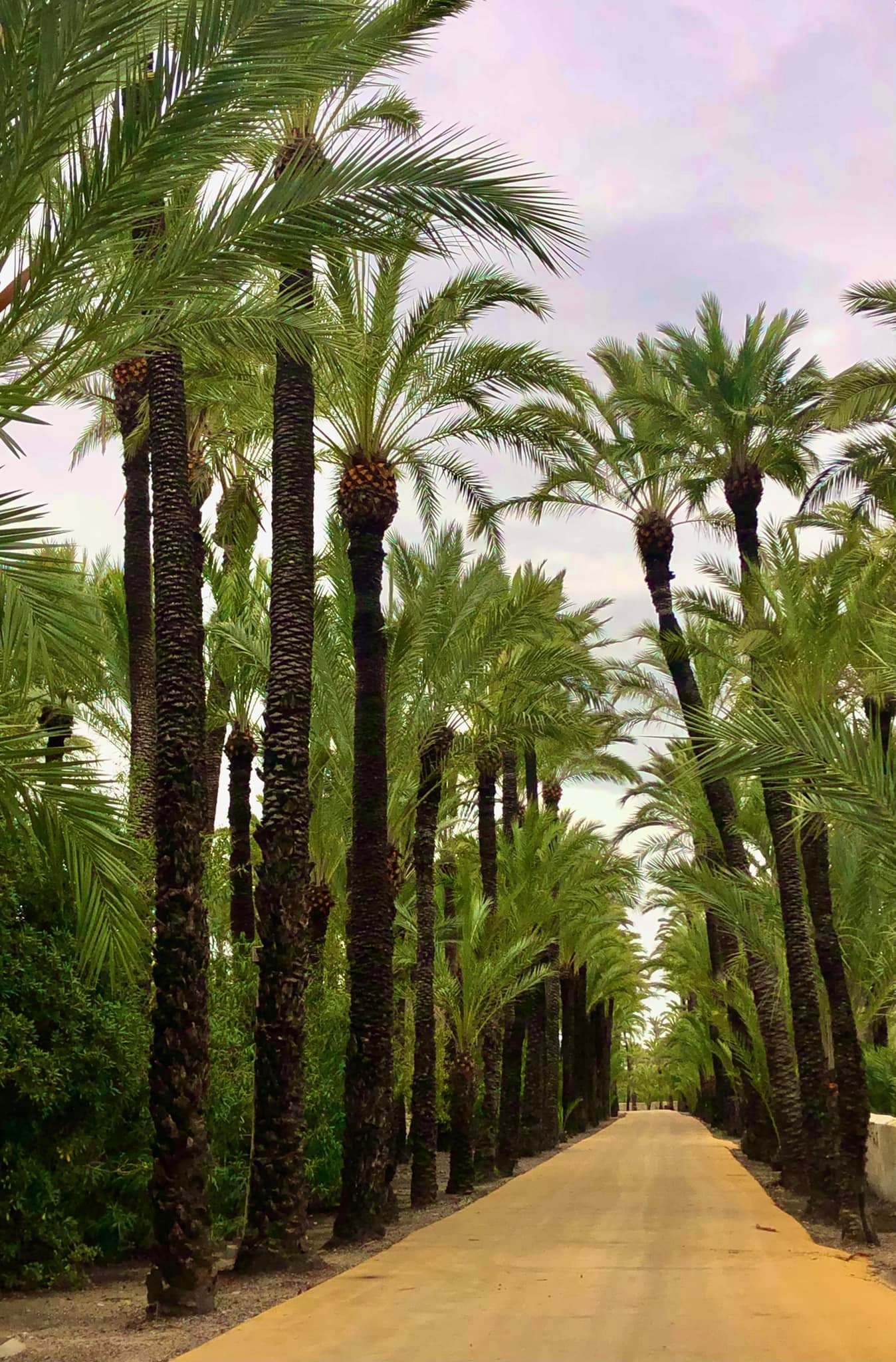
Elche is known for being the biggest palm grove in Europe. This UNESCO site dates back to the 8th century and contains over 200,000 different types of palm trees! We enjoyed walking through the orchard paths, around town, and along the river.
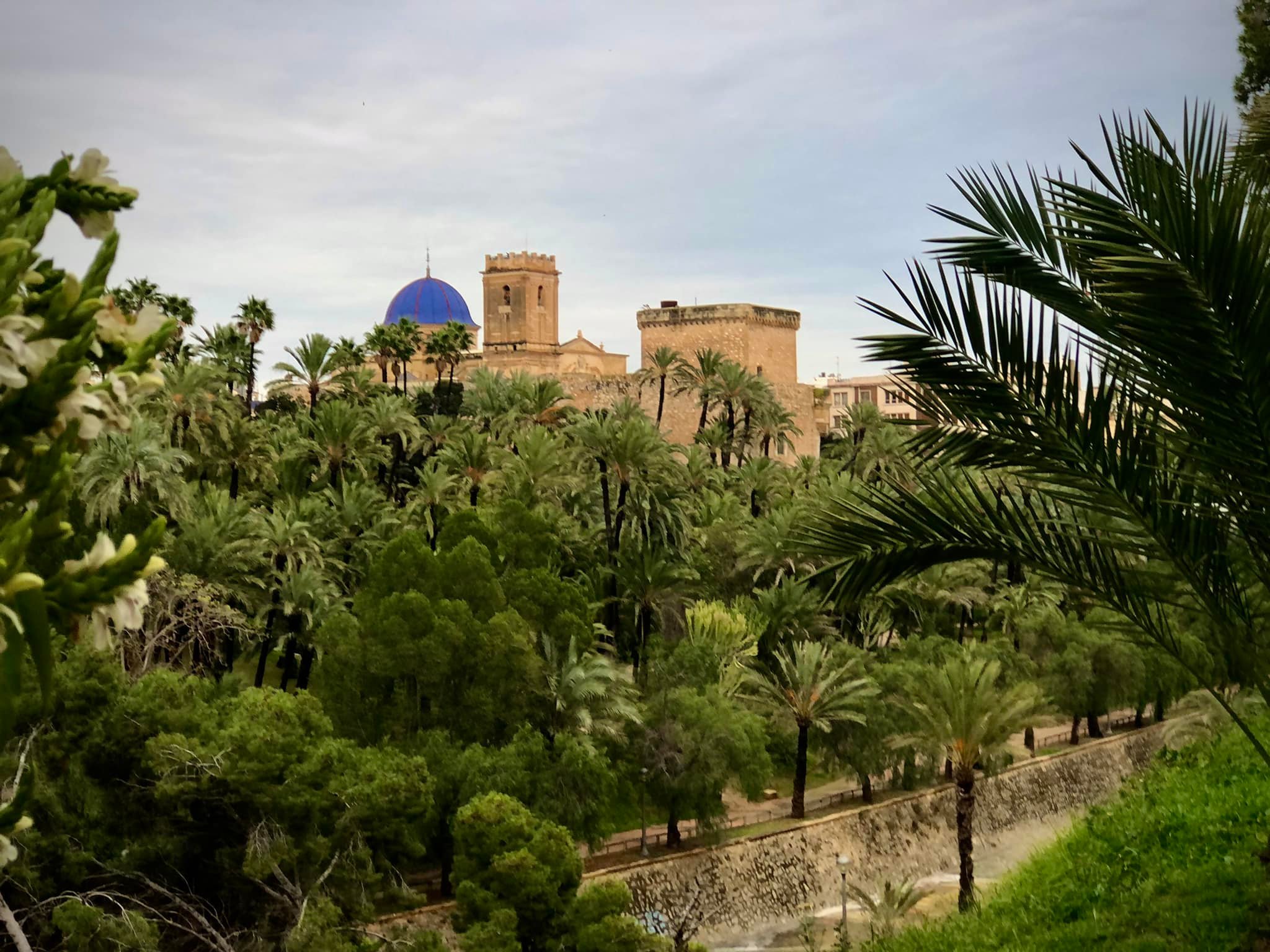
There is a nice path that goes along both sides of the Vinolopo river. From the path, you can see the blue dome of the Basilica de Santa Maria.
We found the river to have very little water and there were colorful paintings on the riverbed. After researching why the riverbed had mural-type paintings, I learned that during the summer of 1991, over 100 artists from Elche, other parts of Spain, and even foreigners, came to fill the riverbed with color. It has been maintained somewhat over the years since then.
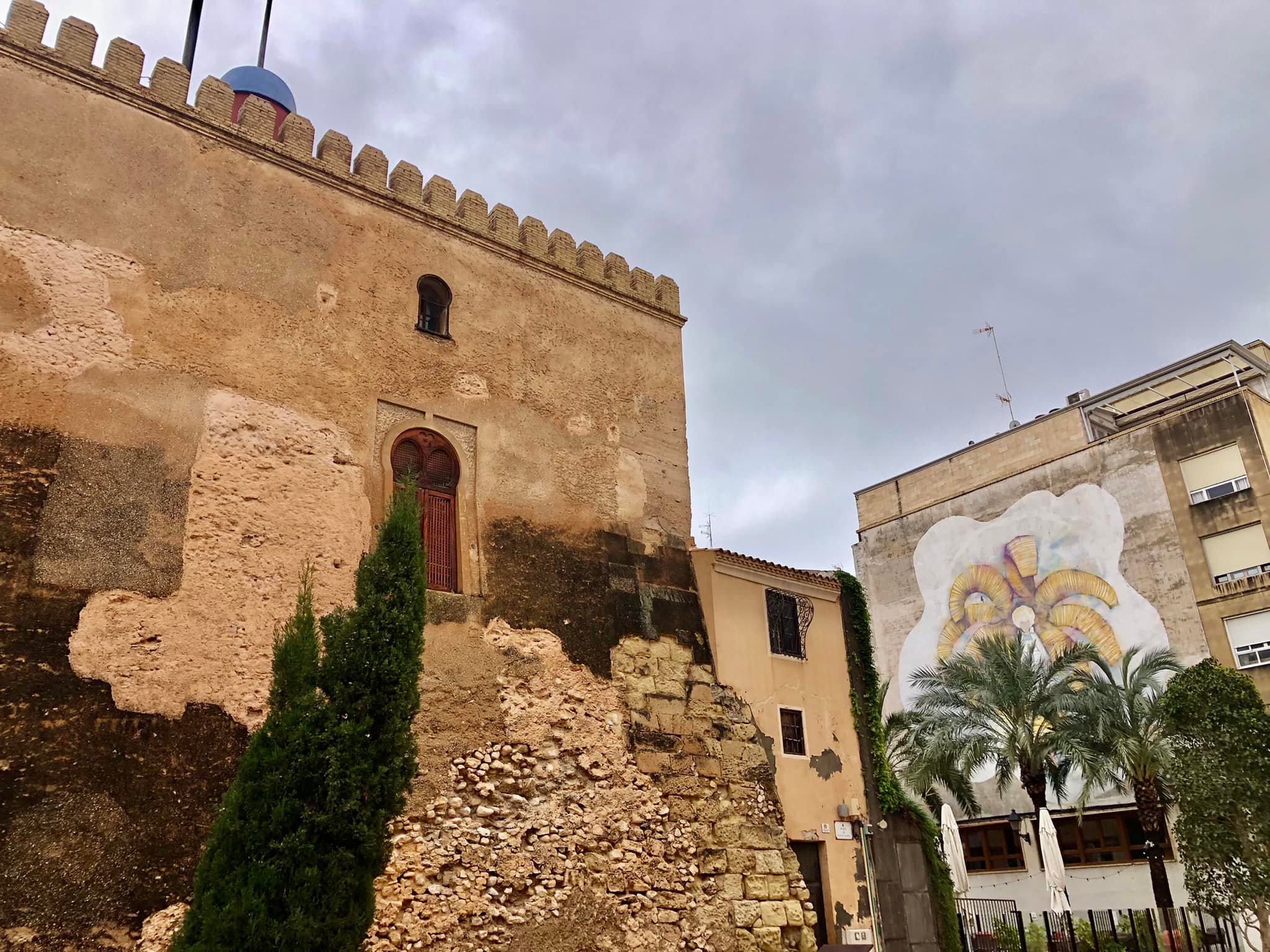
We had lunch in Elche before heading back to Alicante. It was a nice day excursion and inexpensive to do it ourselves and go by train!
Day 5 – Bullring, San Fernando Castle, Muchavista, El Campello
Our Airbnb apartment was a stone’s throw from the Alicante bullring. I took a short walk to see the building up close and visit the free museum. Unfortunately, they don’t allow visitors inside the structure.
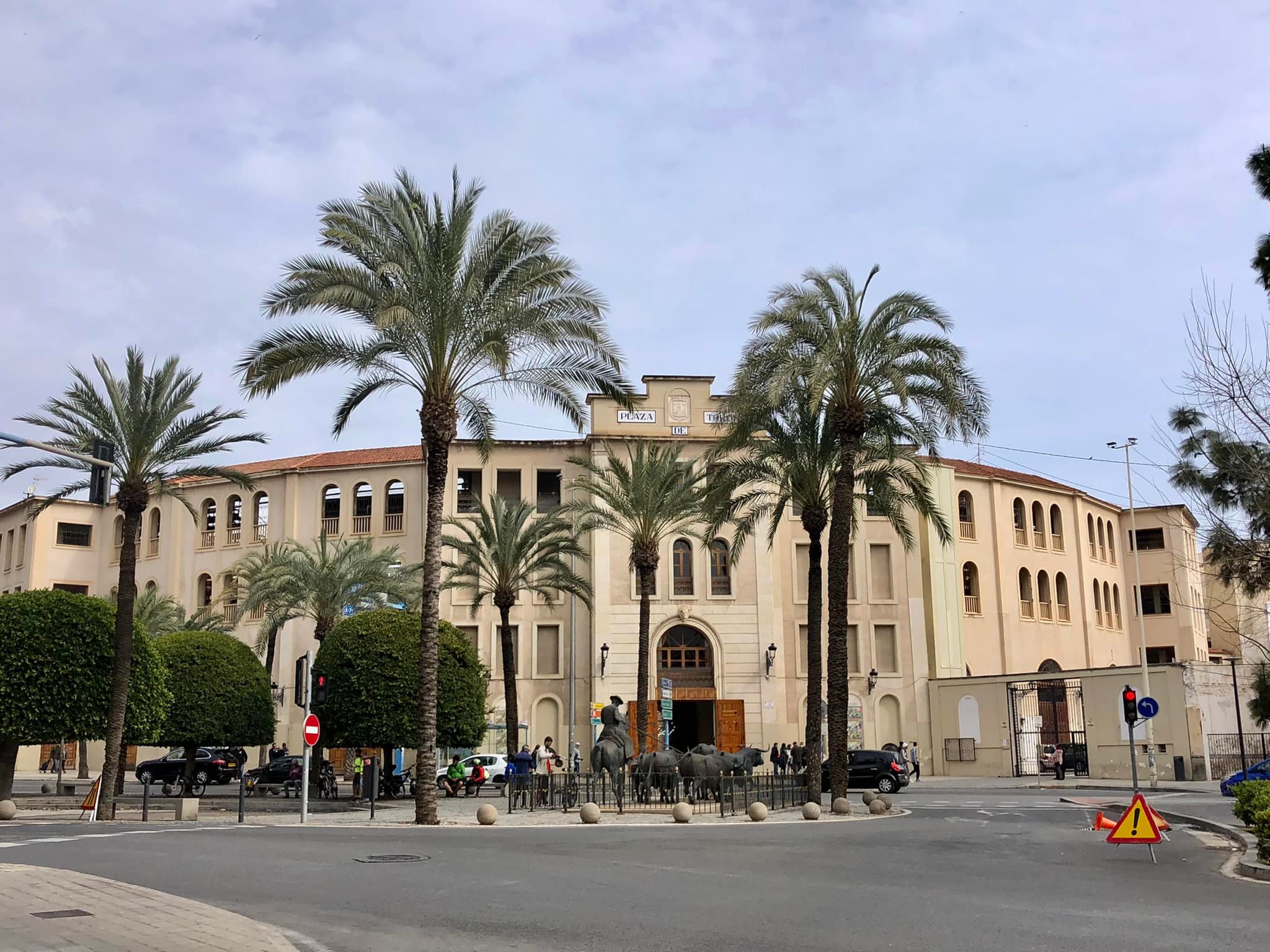
The ‘Plaça de Toros d’Alacant’ bullring was built in 1848 and seats 16,000 people. Bullfighting has been banned in many places but still exists in some Spanish cities. Alicante has very few bullfights these days. The stadium is used for other special events and concerts.
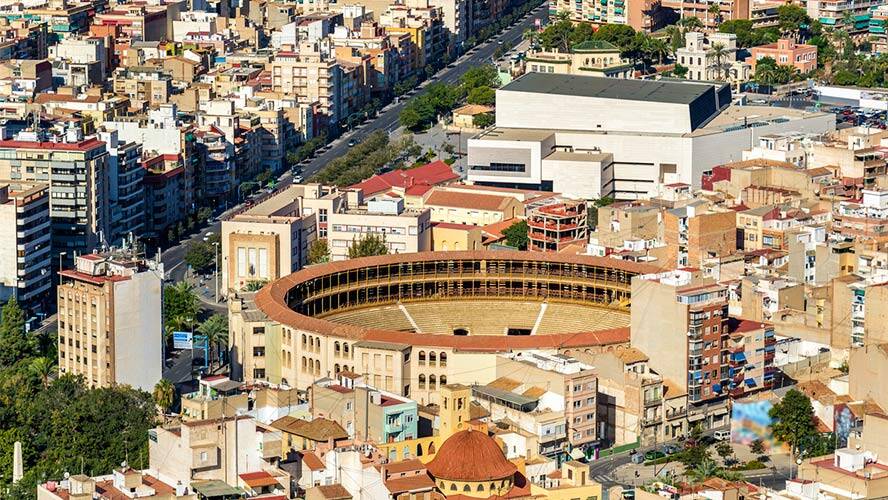
Although I don’t condone this violent sport, I found it fascinating to visit the museum and see old pictures of Spanish matadors and their intricate costumes.
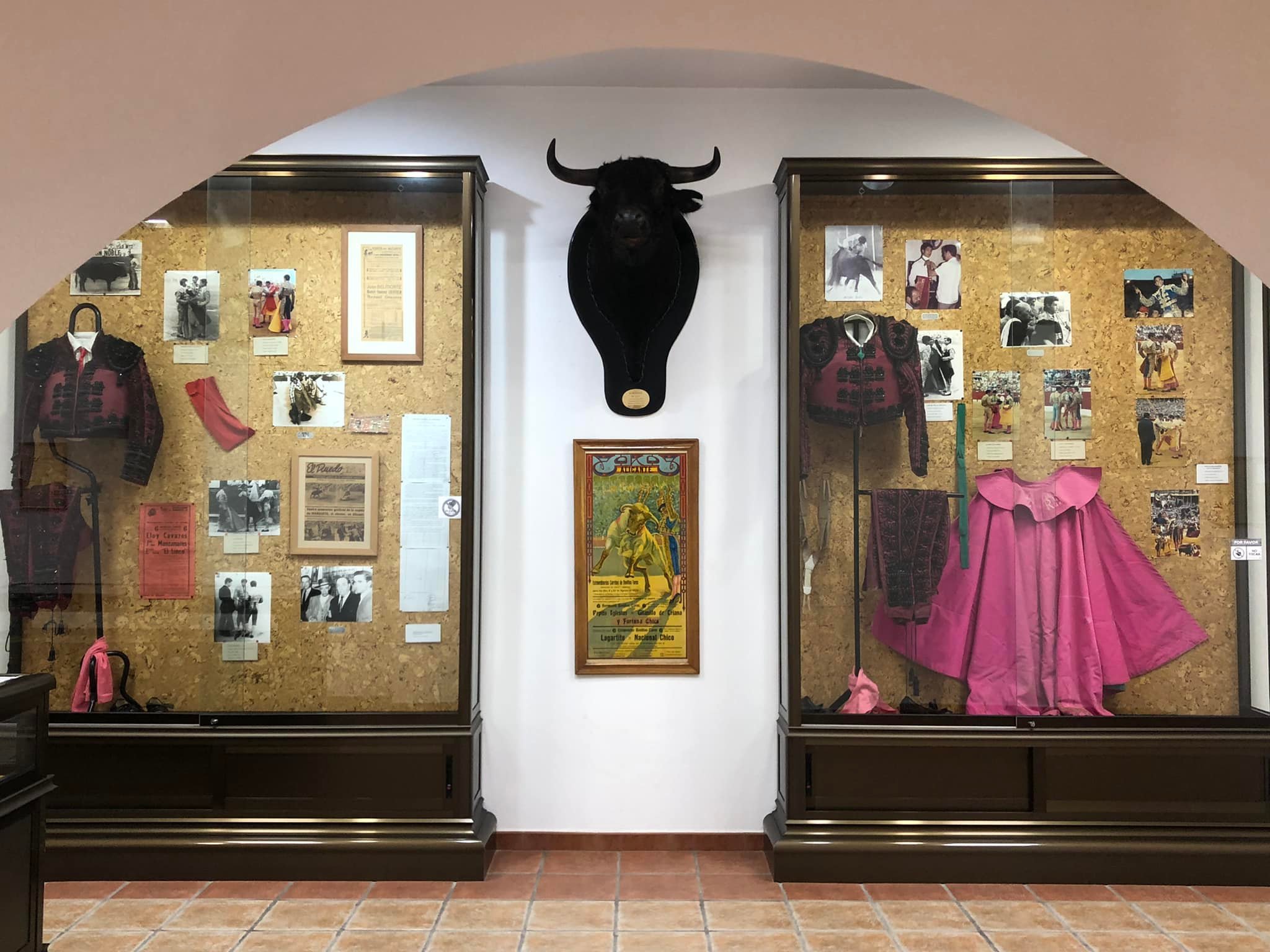
After the bullring visit, I walked in the other direction to reach the San Fernando Castle. This fortress was built in 1812 and although it is not as impressive as the Santa Barbara castle, it offers great views.
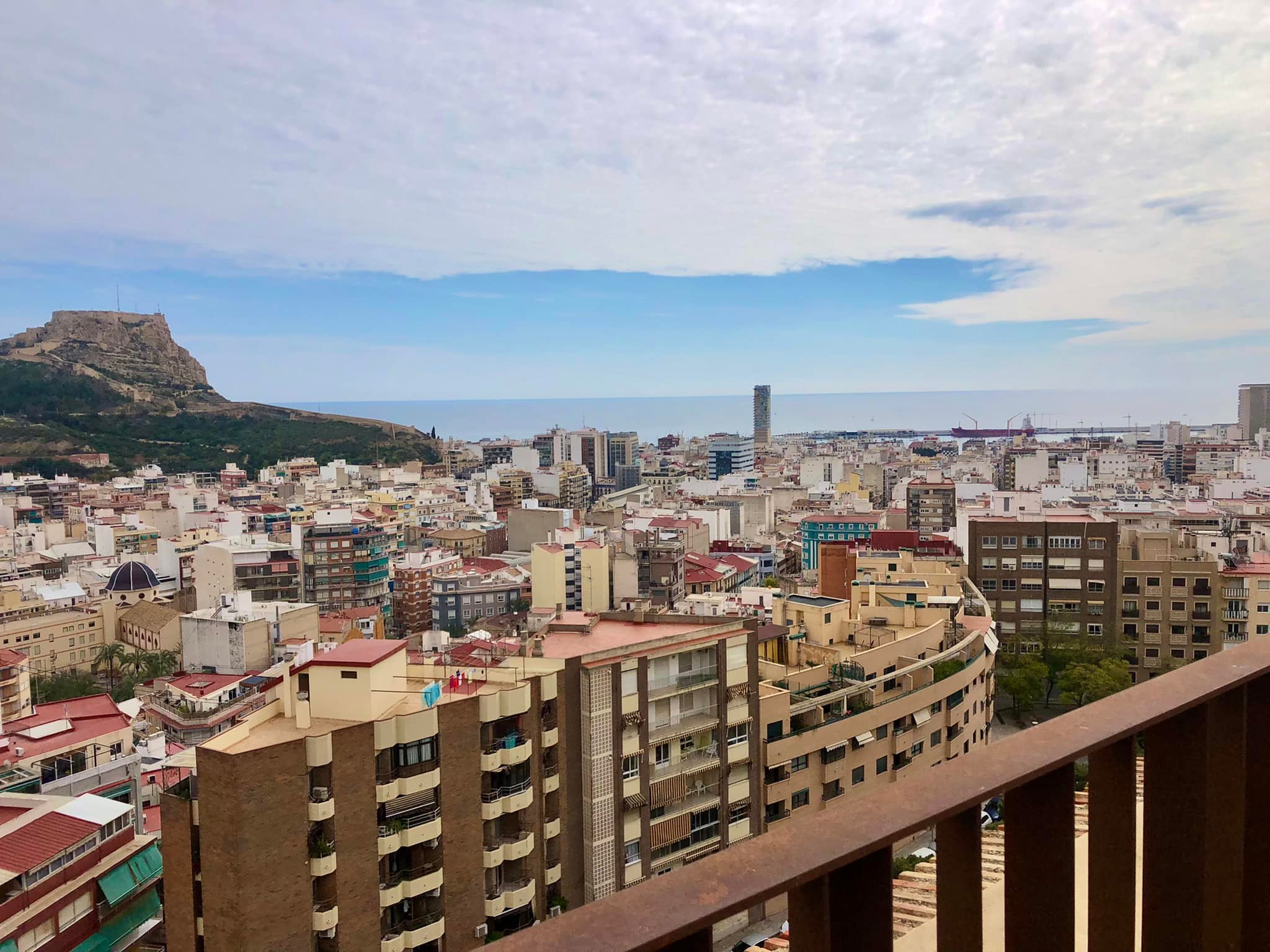
Our main excursion for this day was to take the tram again up north to a town called Muchavista. The Playa Muchavista is over 3 km long and 80 meters wide.
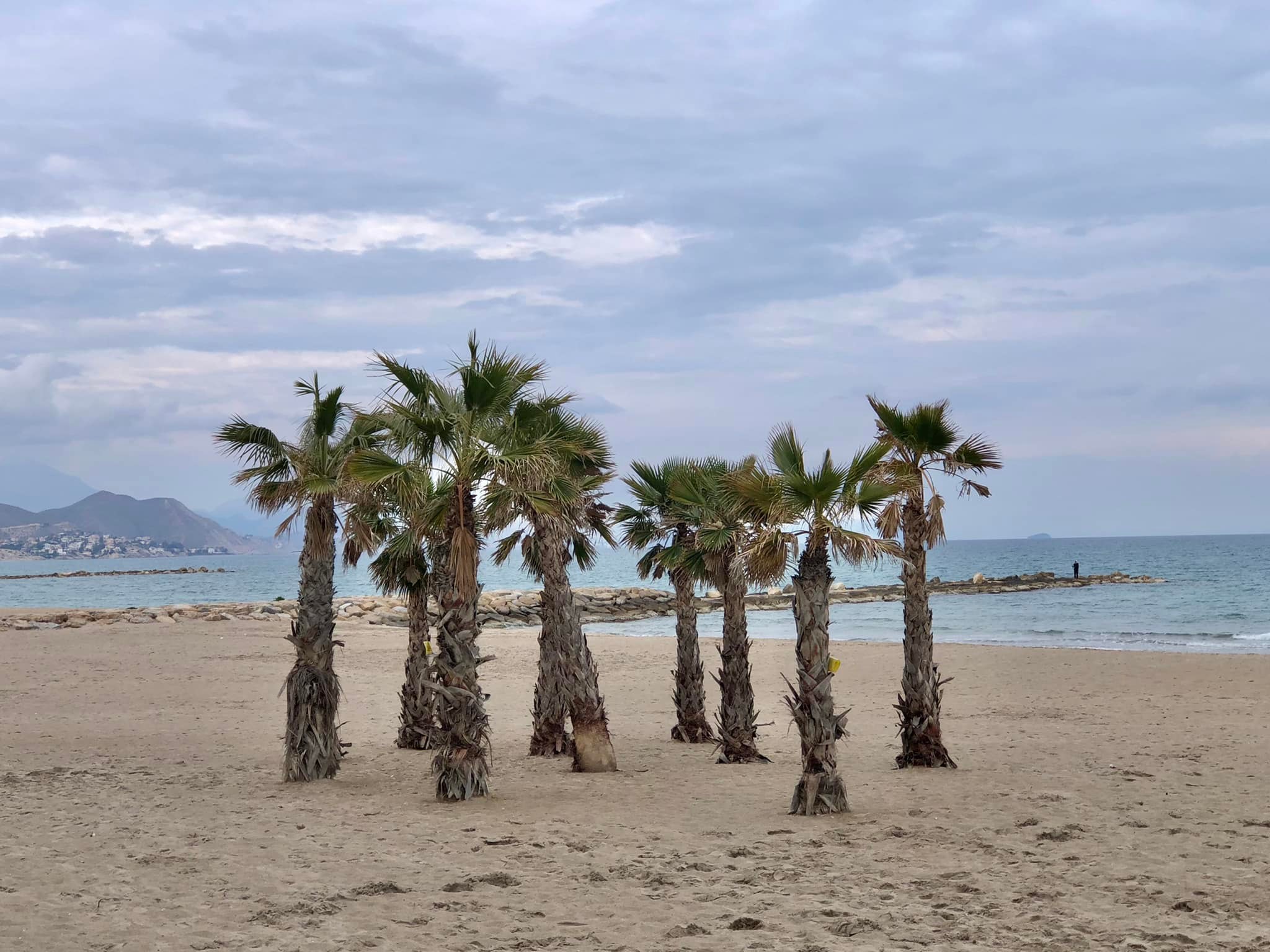
We found a great local restaurant to sit outside and have a paella lunch. One thing I can say about the places we ate at is that they were mostly small, simple, local restaurants. We avoided the tourist restaurants in crowded areas because they are usually overpriced and not as good quality food. Because my friend speaks fluent Spanish, she was very good at finding these off-the-beat places and communicating with the locals.
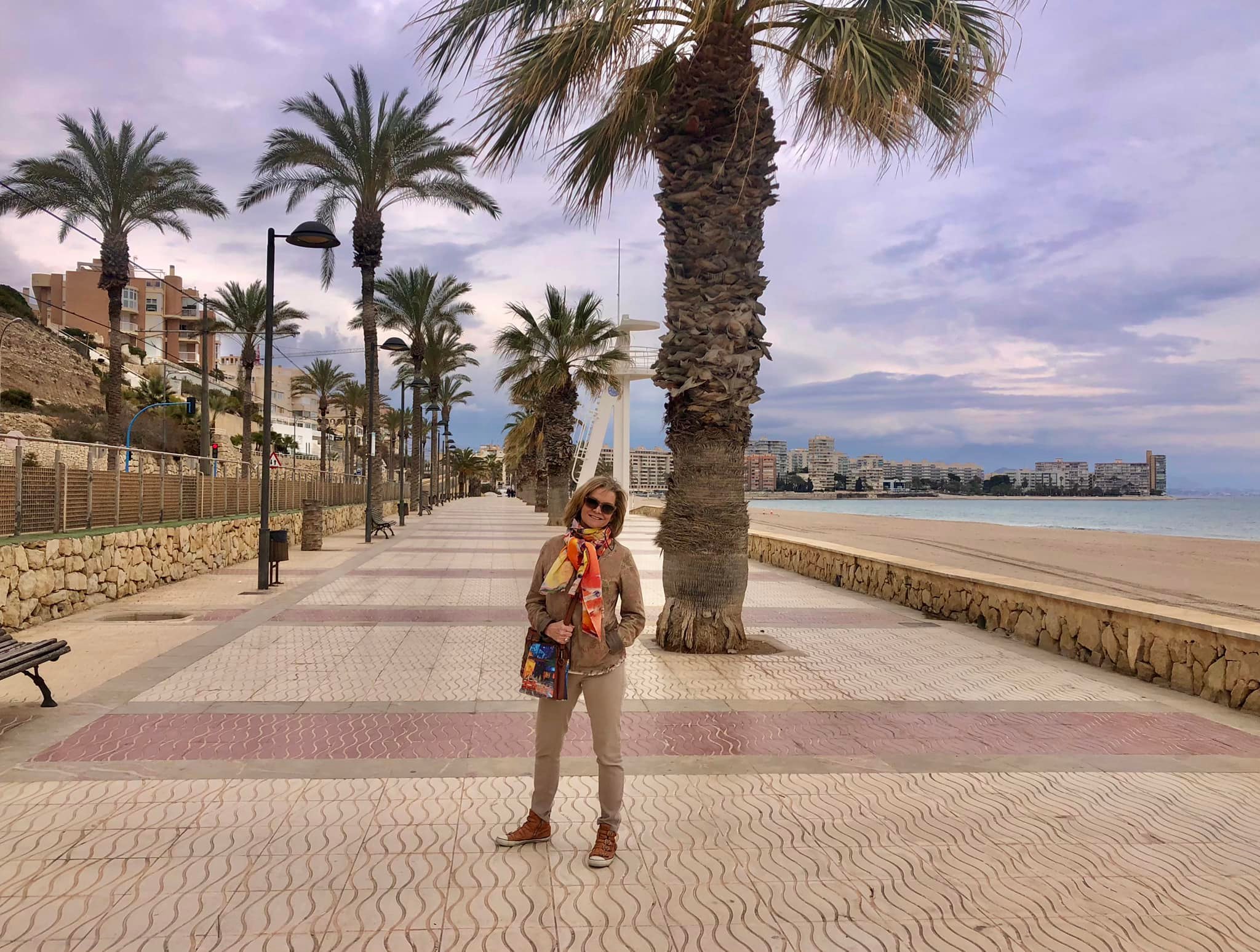
We walked along the beach north to the pretty town of El Campello. It was the perfect setting to have a sangria and watch the locals playing volleyball on the beach. It was mostly cloudy and cooler this day, but we made the best of it!
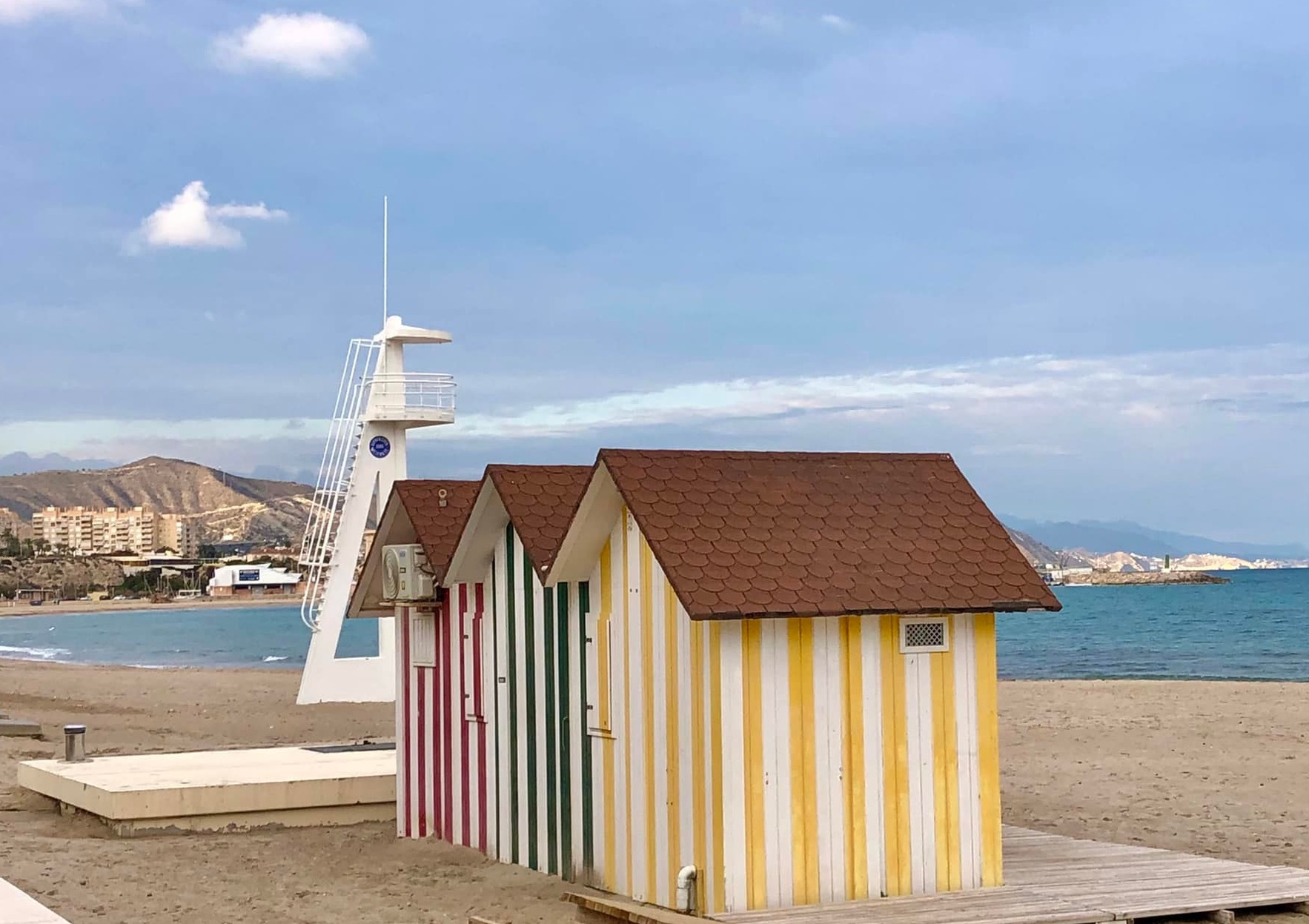
Day 6 – Rainy Netflix Day
We were hoping for hot sunny weather the whole week, but there was a cold front with some rain on this day. We slept in late, walked a short way for a late lunch, and then came back to our apartment to watch Netflix movies. It was good to have a ‘down day’ after all our on-the-go activities.
Day 7 – Santa Pola
For our last day, we opted to stay closer to Alicante for an excursion. We had talked about going as far north as Altea or Calp, but we couldn’t justify the long train journey that would take the bulk of the day. I will have to visit those pretty areas on another trip.
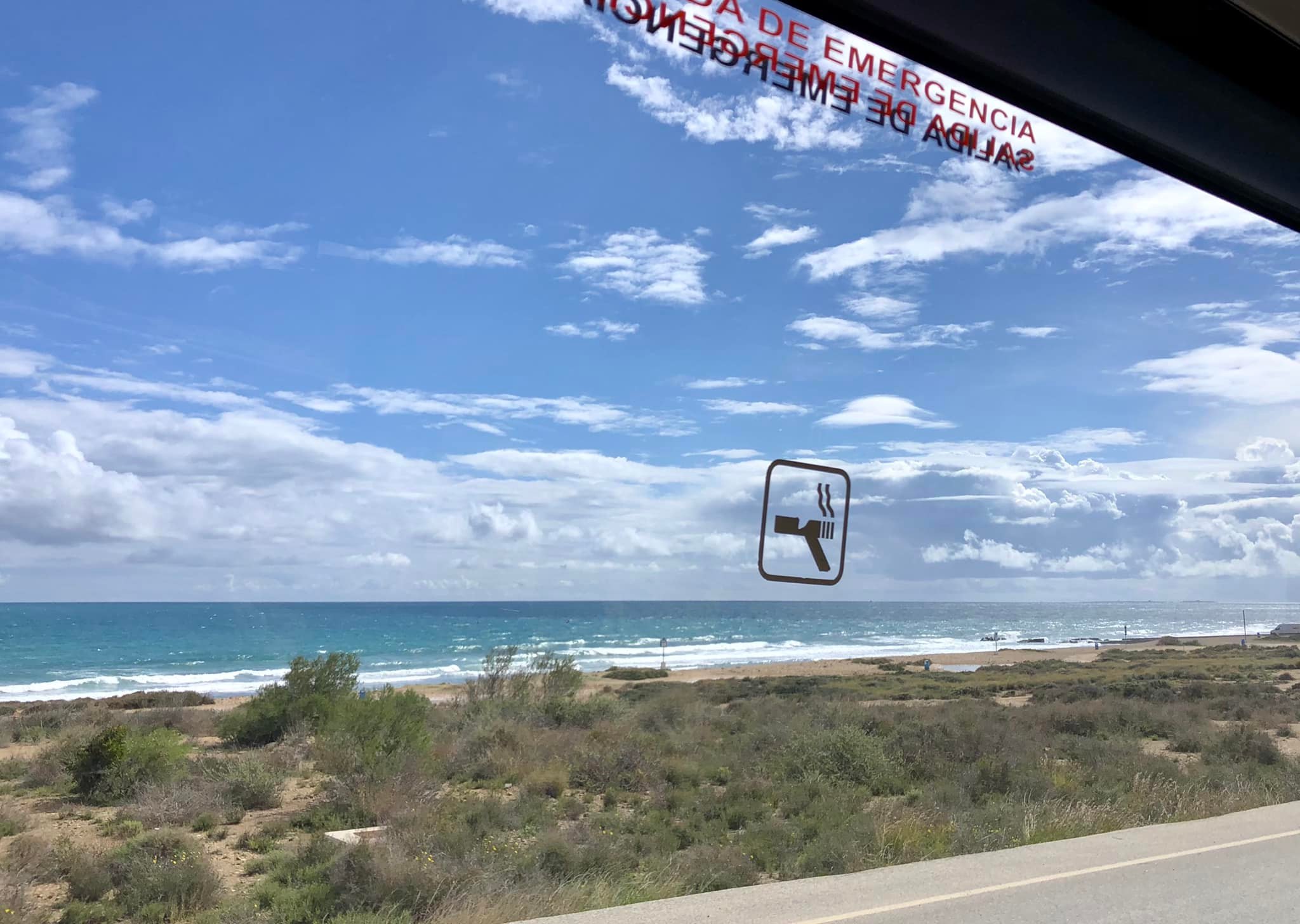
Instead, we took a 45-minute bus ride from Alicante to the town of Santa Pola. The ride was very scenic as we passed along beautiful coastlines and beaches in the area of Arenales del Sol.
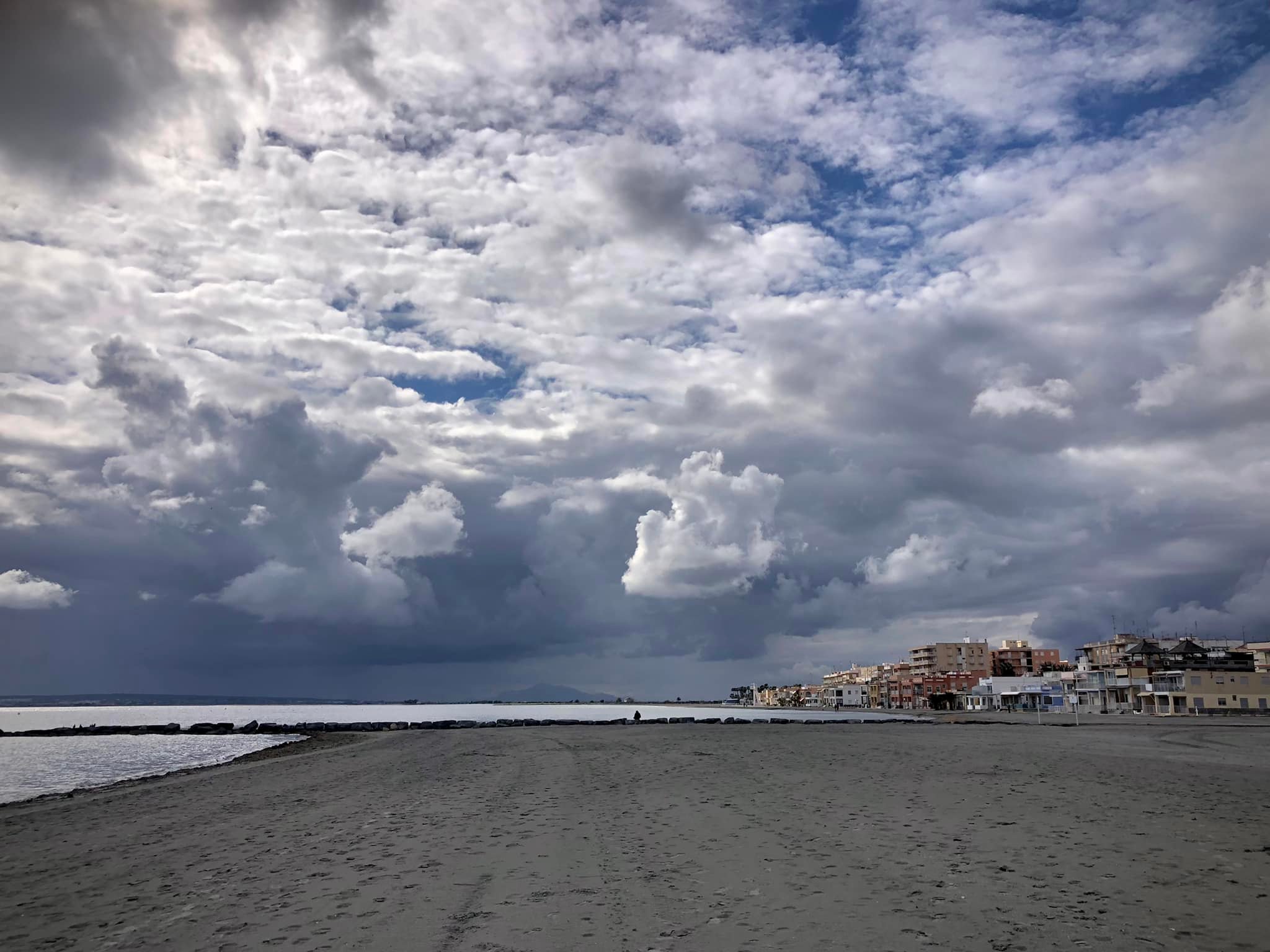
The weather turned very cloudy, but we managed to walk along the big beach in Santa Pola and have a delicious lunch. I have to say I fell in love with Spanish tapas during this trip. I experimented with many different varieties including anchovies, baby squid, octopus, beef oxtail, Russian salad, mussels, and calamari.
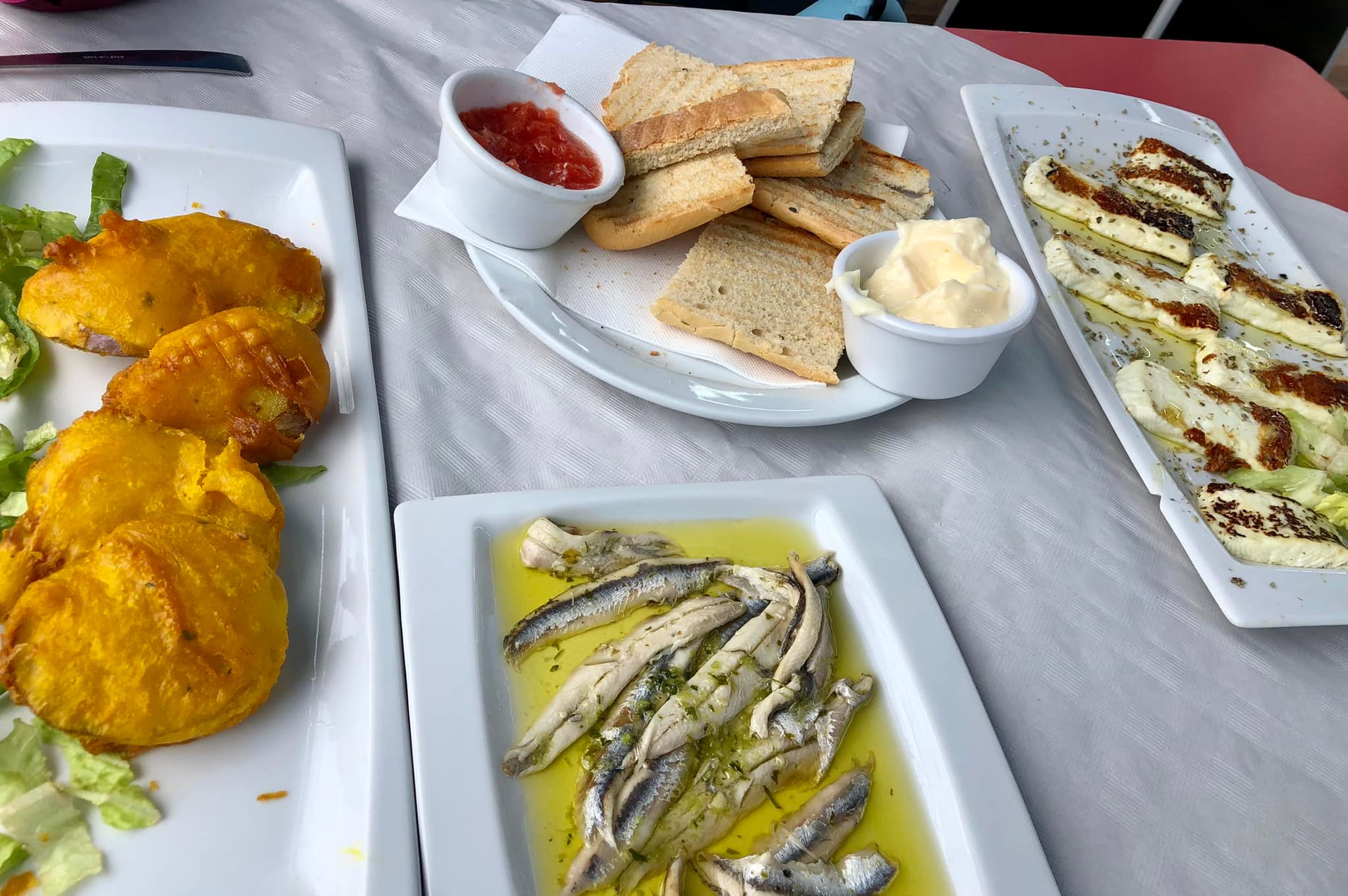
Summary of Alicante Spain in One Week
Now you have my one-week itinerary in and around Alicante, Spain. If you ever go there, hopefully, you can use my suggestions in this blog post! I loved this area and thoroughly enjoyed spending the week there with my dear friend. It sure helped that she could navigate the public transportation and order at restaurants with her fluent Spanish!
My next destination in Spain would be the Valencia area. I’ve never been there but am interested to explore this other popular coastal city. Where have you been in Spain? What were your favorite destinations? I would love for you to comment below about your adventures in Spain!
For more of my blog posts about Spain, check out my Spain Page!



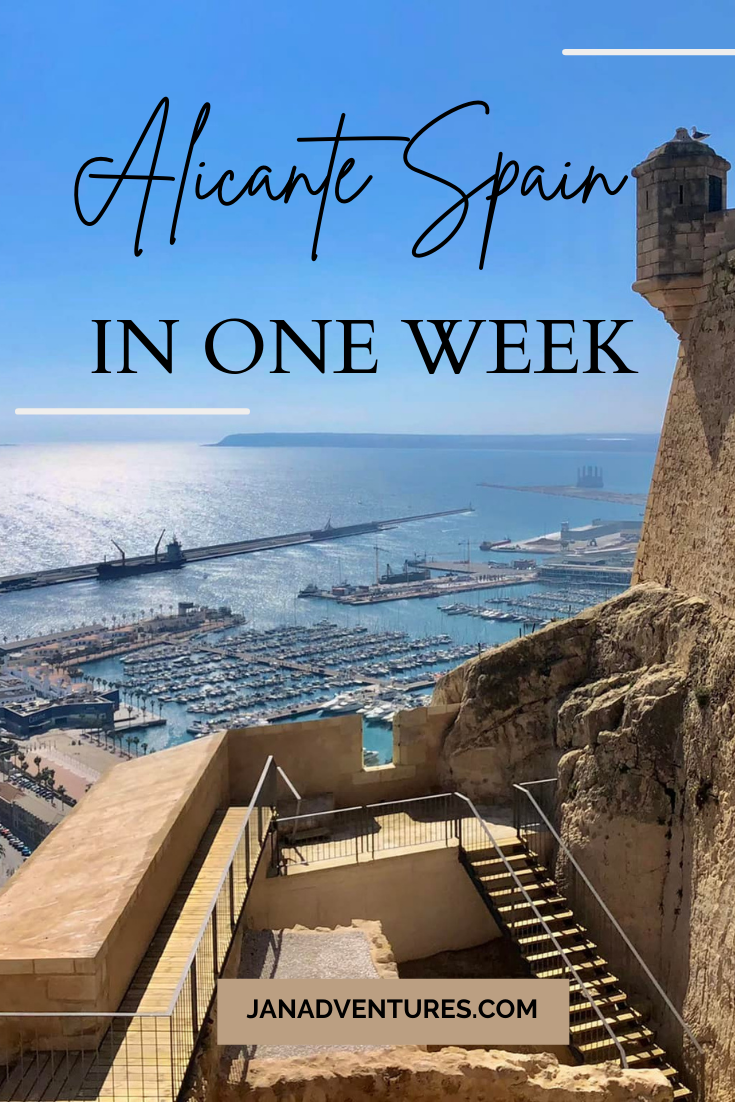
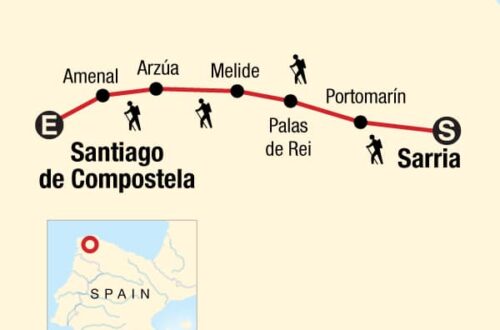

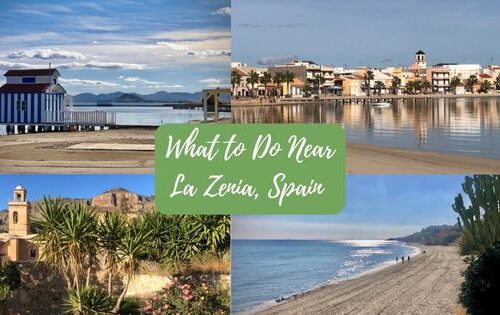
15 Comments
Lisa, Casey, Barrett Dog
Your pictures and incredible descriptions had us right there with you in Spain! The beaches look amazing. Thank you for sharing with us.
Tiffany
You seem to maximize your travels in Spain! This would be exactly how I’d want to explore a country I might not expect to return to – it looks amazing!
Susan Lloyd-Piralli
Great article Jan!
Ive been to Alicante but did not see nearly this much! Now I’m thinking that I need to return for a ré-visit!
😊
Jan
Thanks for your comment Susan! Yes, there are many things to see around Alicante!
Cindy Moore
What a beautiful area! I’d love to visit Spain.
Kristen Allred
The markets, the shopping, the coast. It all looks so beautiful!
Lisa, Casey and Barrett Dog
The beaches are wow! Spain is definitely on our list. Thank you for sharing!
Lisa
I have Spain on my list for our trip in 2024. I would like to add this for sure!
Susan
The Central Market looks amazing!! (even with the random feet available for purchase) Spain is so beautiful. Thank you for introducing me to this previously unknown area! Gorgeous.
Barbara
WHAT a great place to explore! How beautiful! The marble tile walkway in Alicante fascinate me!
Justine
What a beautiful trip to Spain! I went to Barcelona as a child and didn’t have a good experience unfortunately (our camera was stolen), but this looks like a beautiful area to visit. Maybe I’ll have to revisit some other areas of Spain one day!
Cecile Leger
Wow! What a amazing adventure. I never visited Spain. I’d love to see that Santa Barbara castle.
Alexis Farmer
I love the mushrooms! And looks of the beaches 😍
Tiffany
I love the mushroom statues! And after a LONG winter I am ready for those beaches
Tammy Horvath
I’ve never been to Spain, but Alicante looks amazing. I’d love to see the ficus and palm trees. I don’t want to miss the biggest palm grove in Europe in Elche. What an adventure you had.